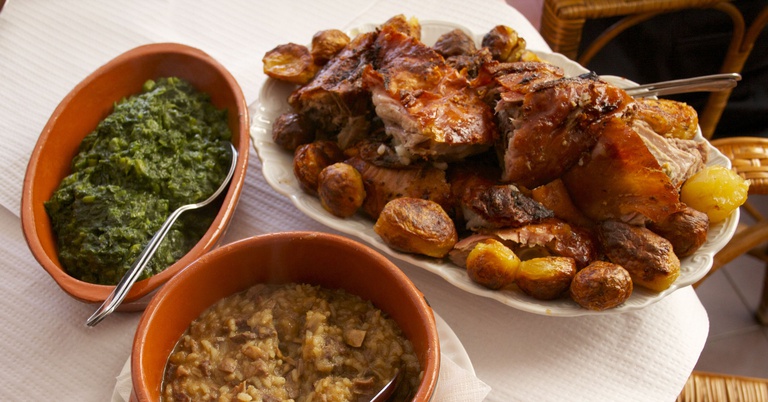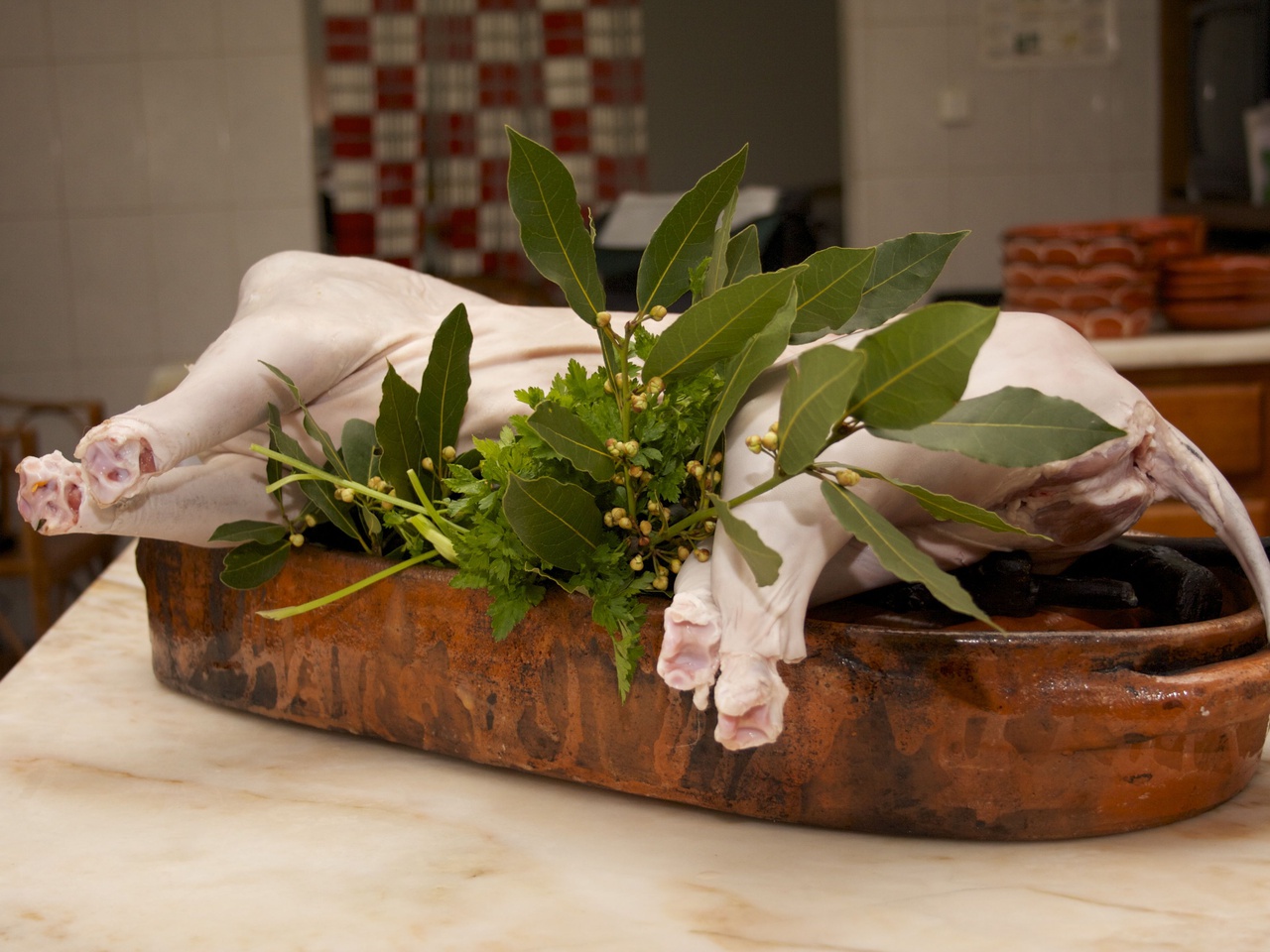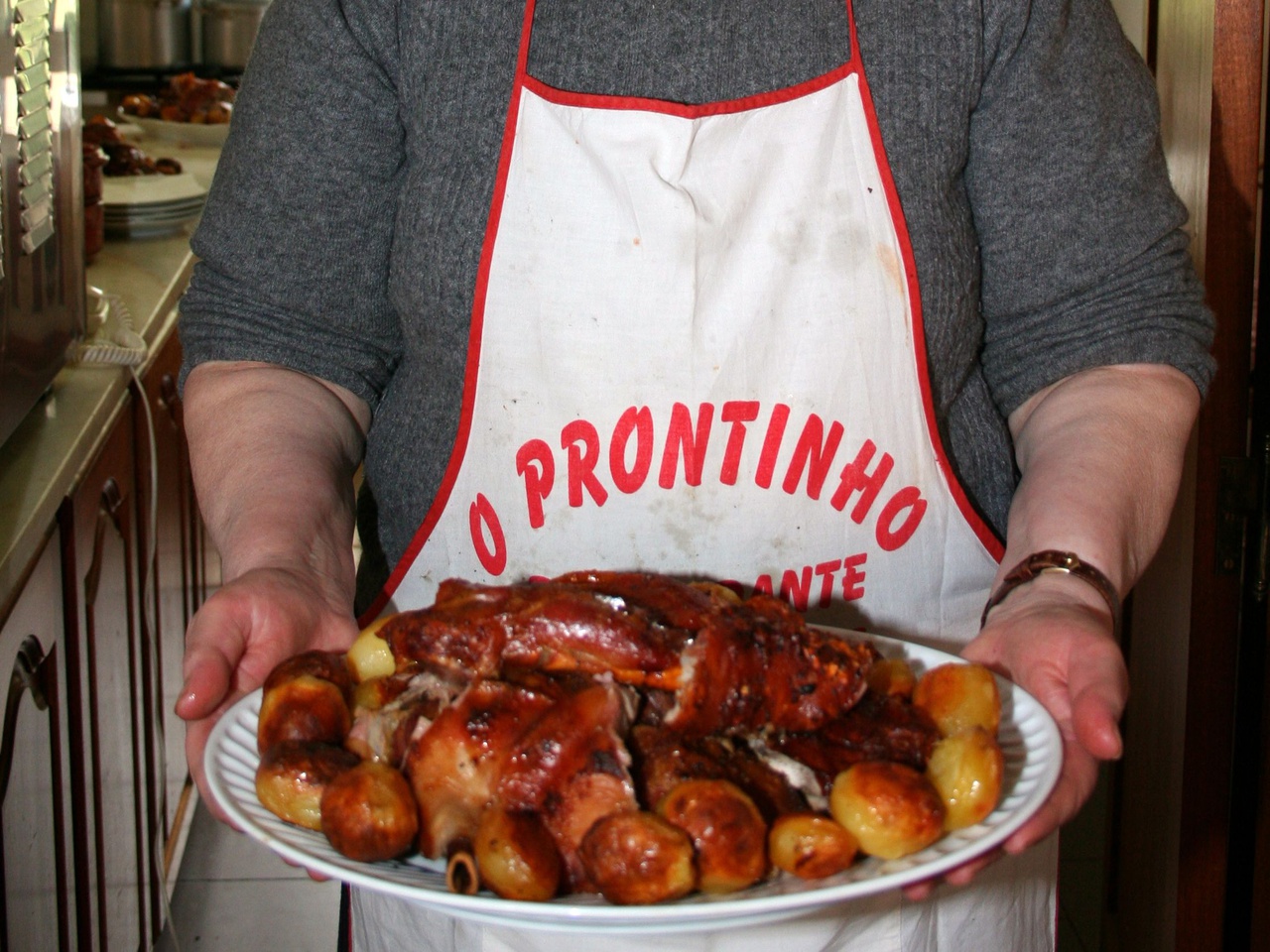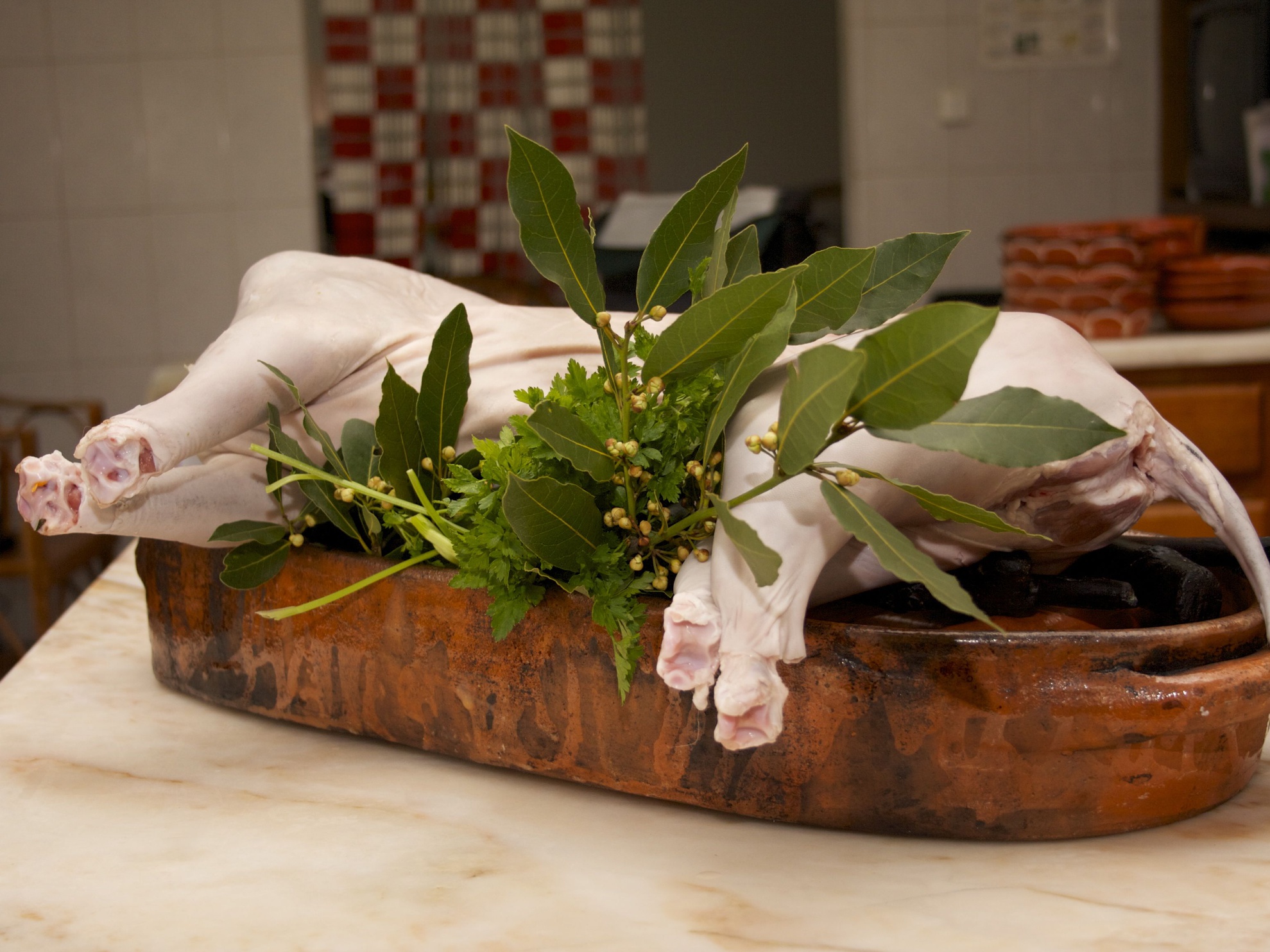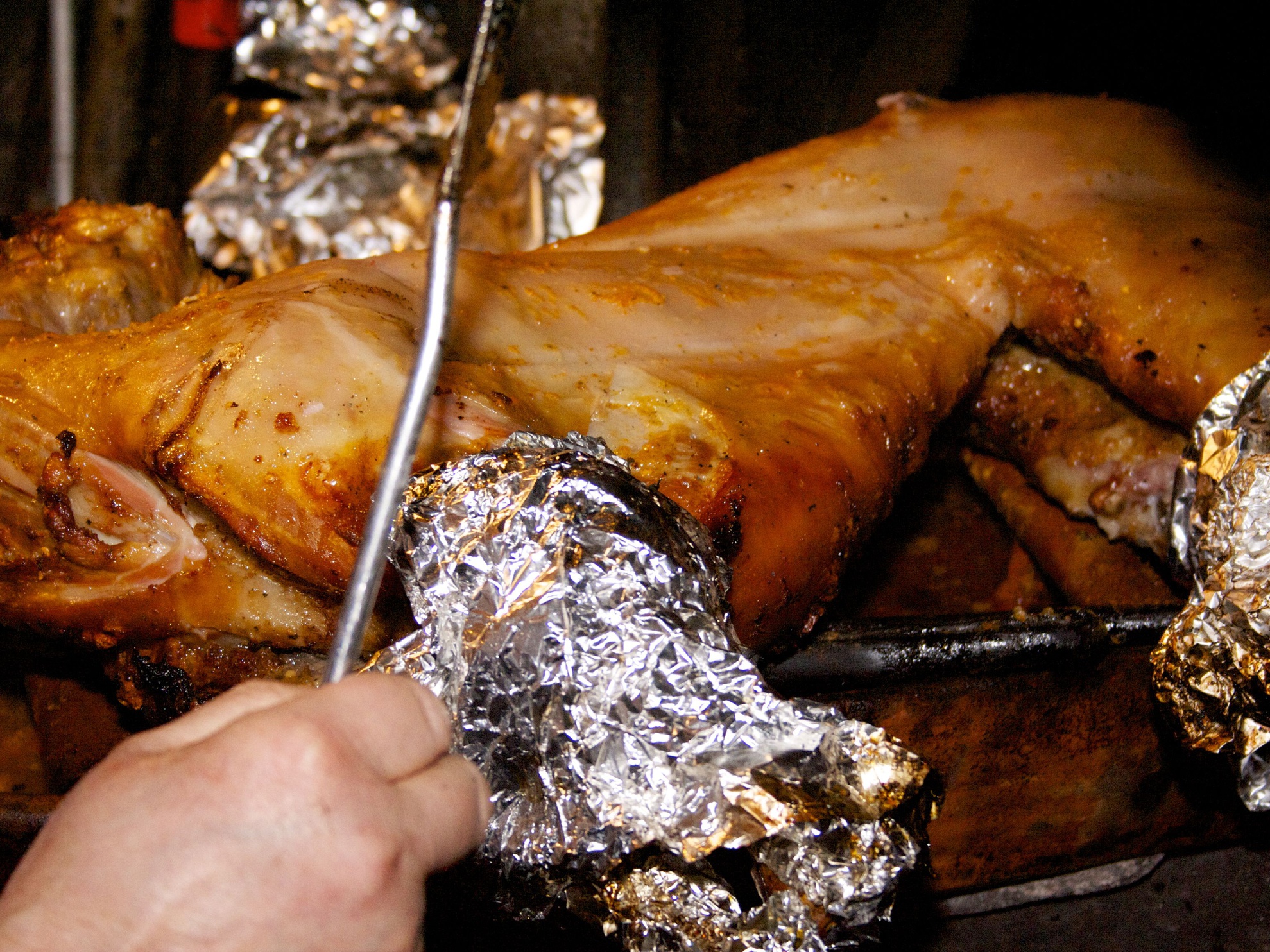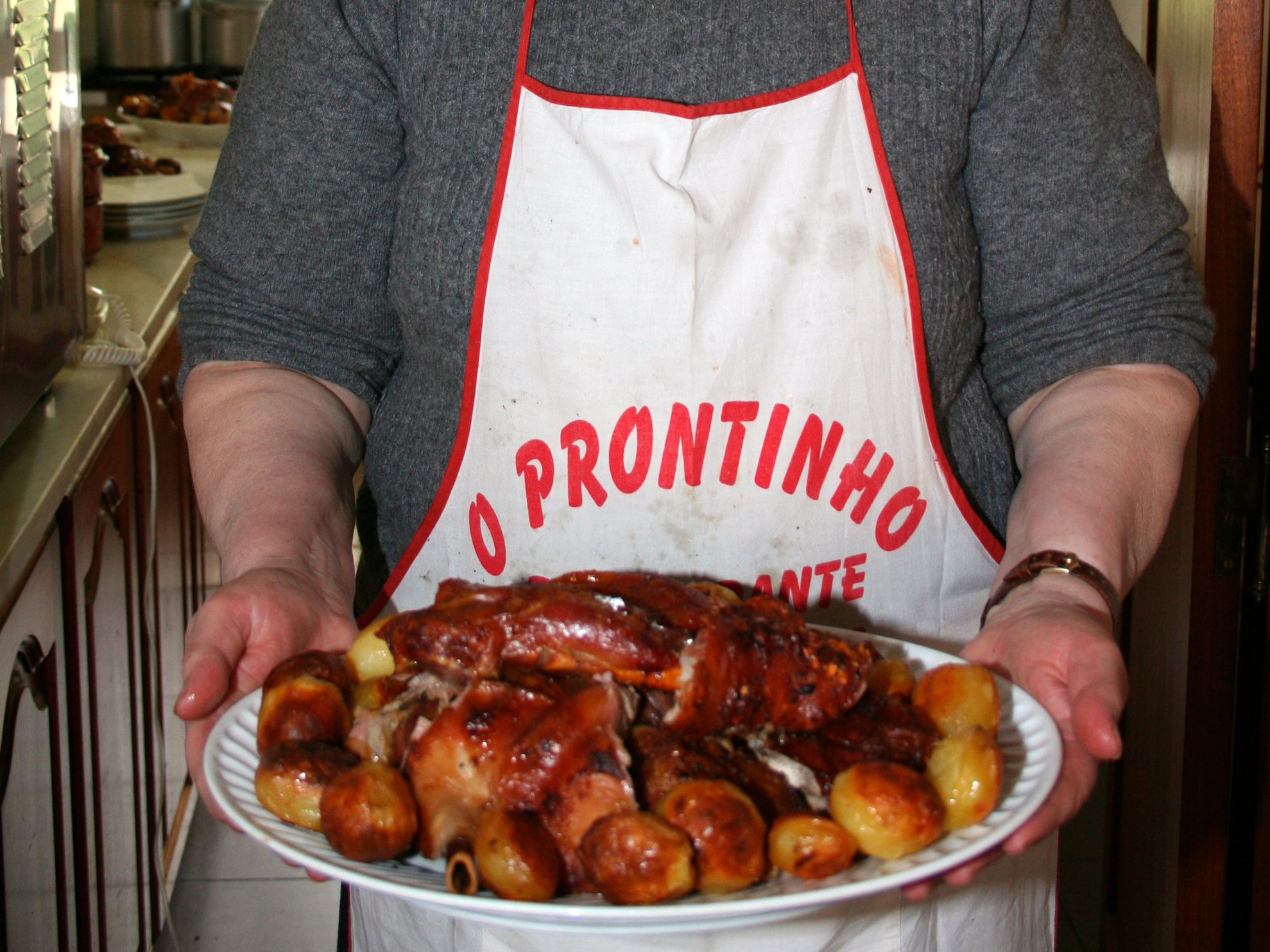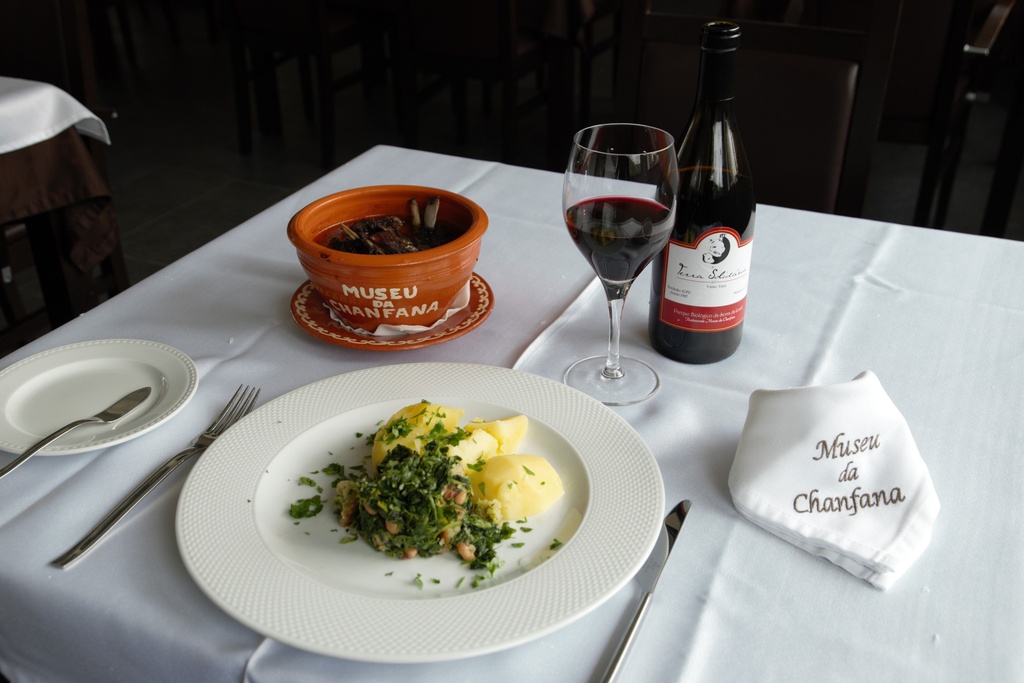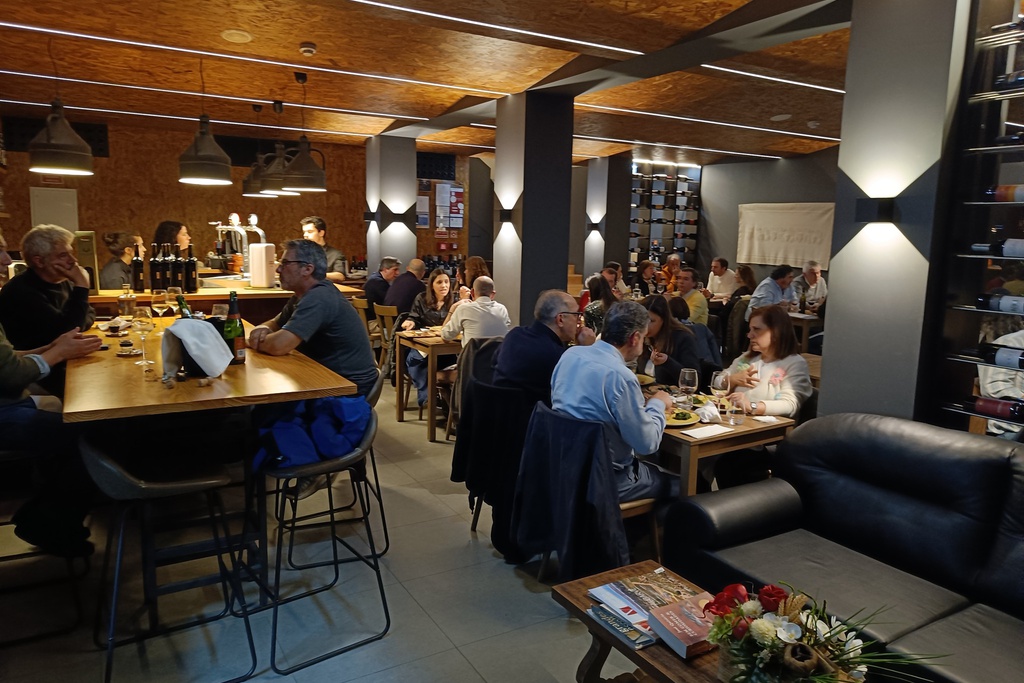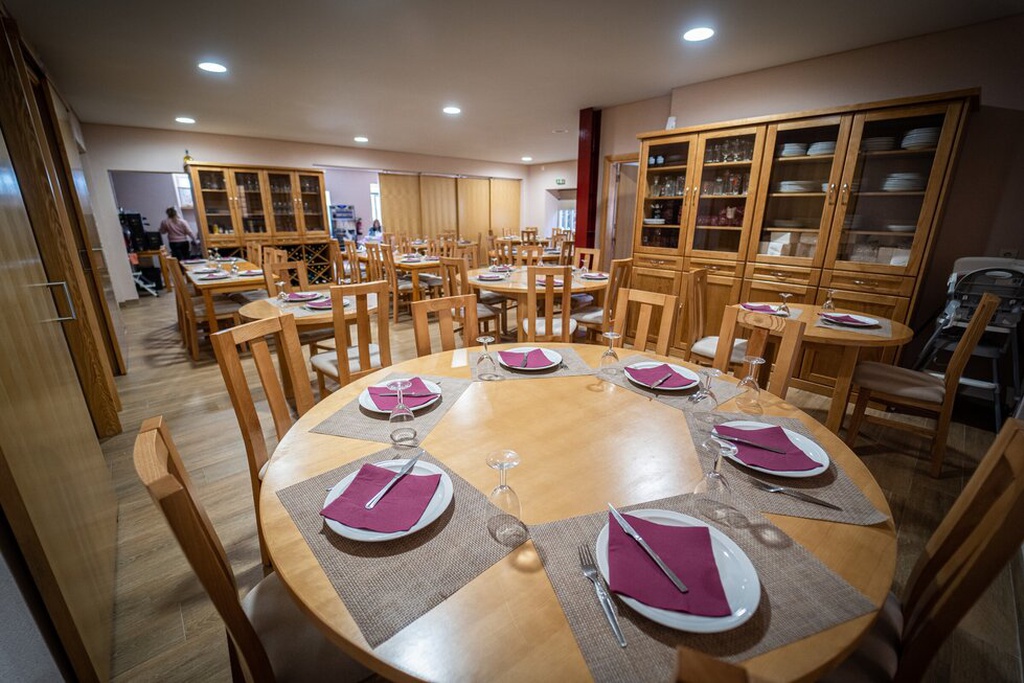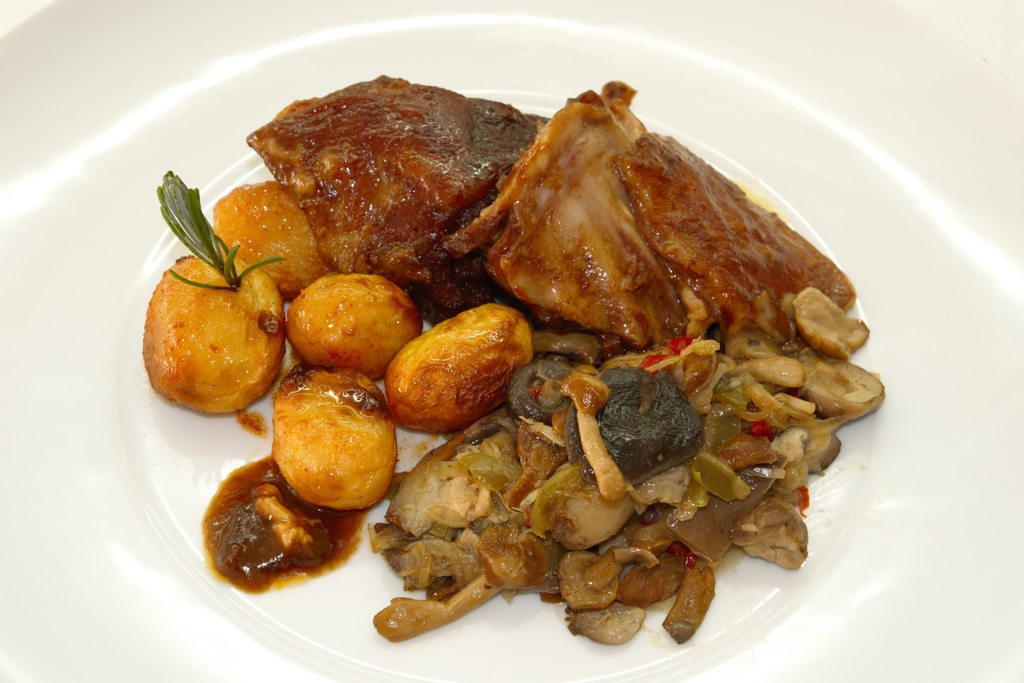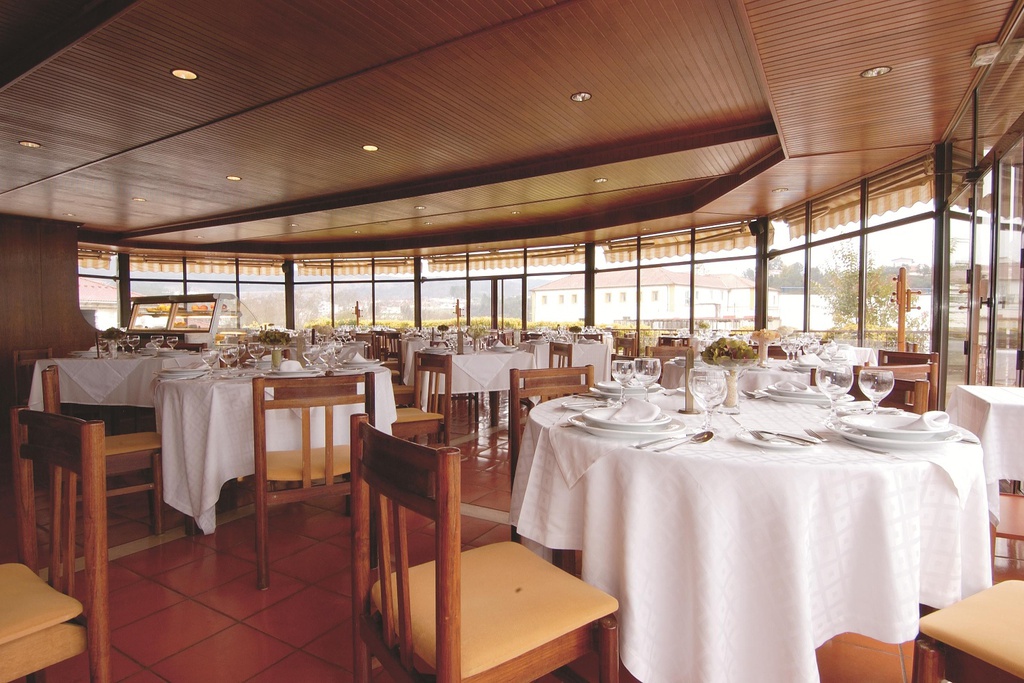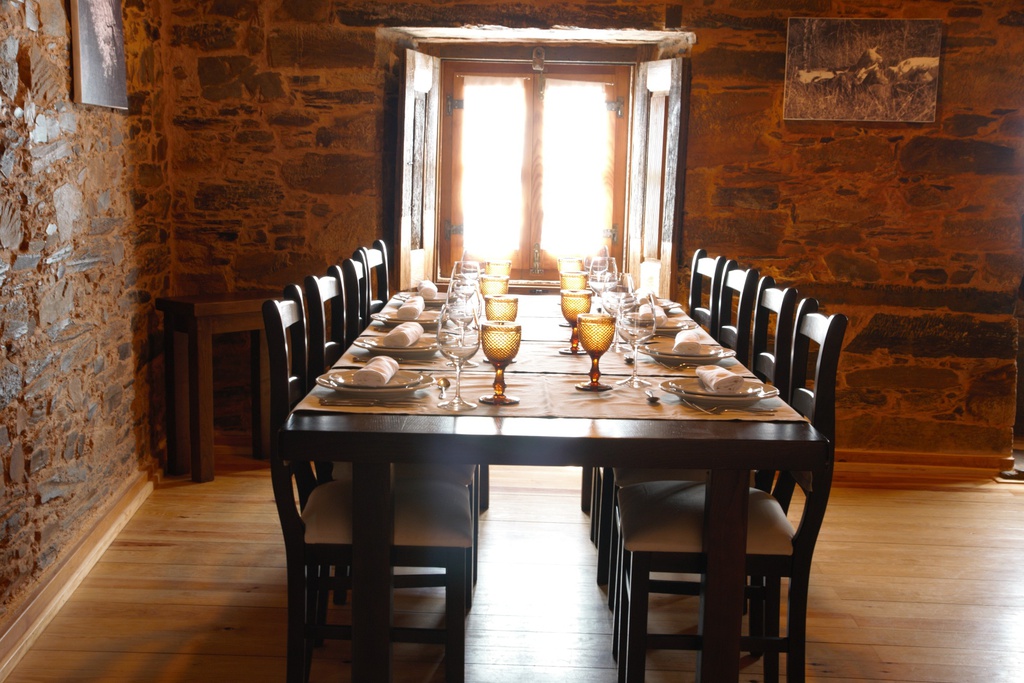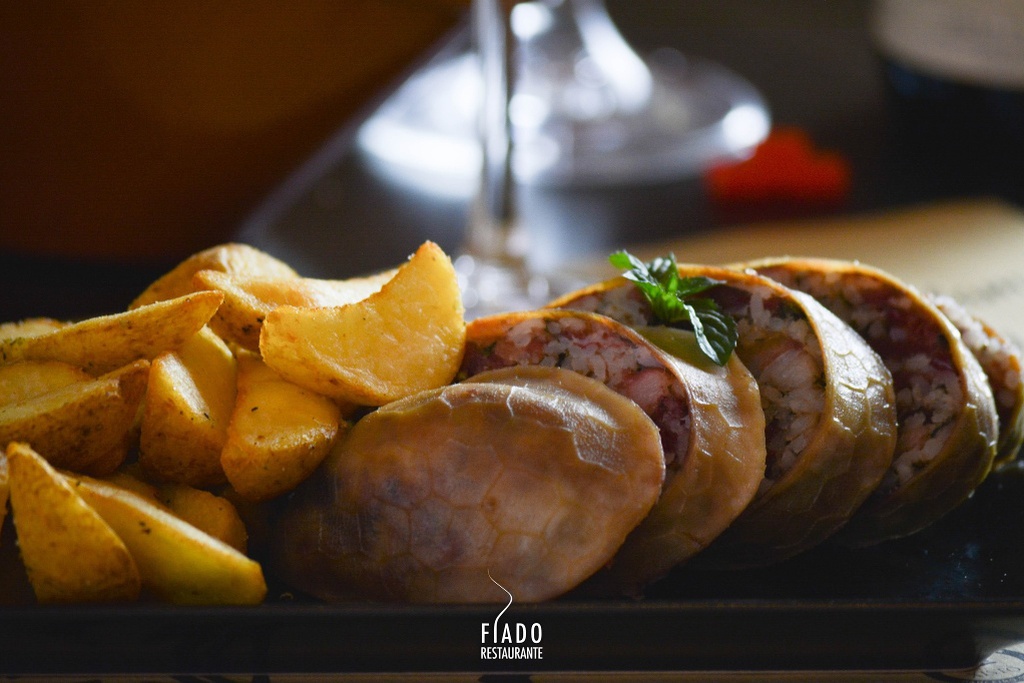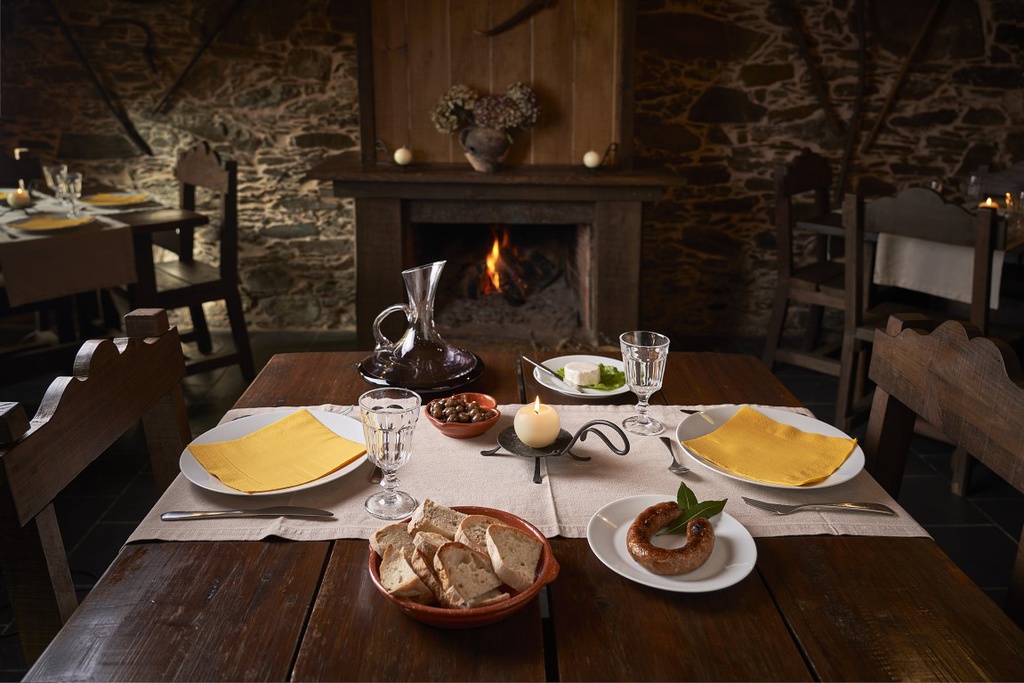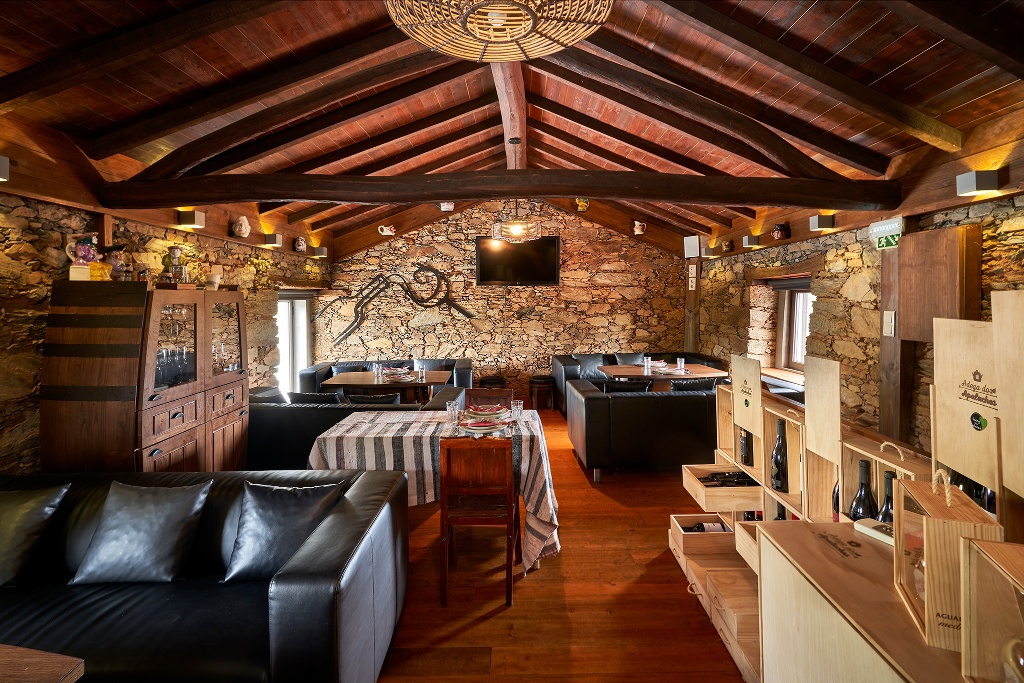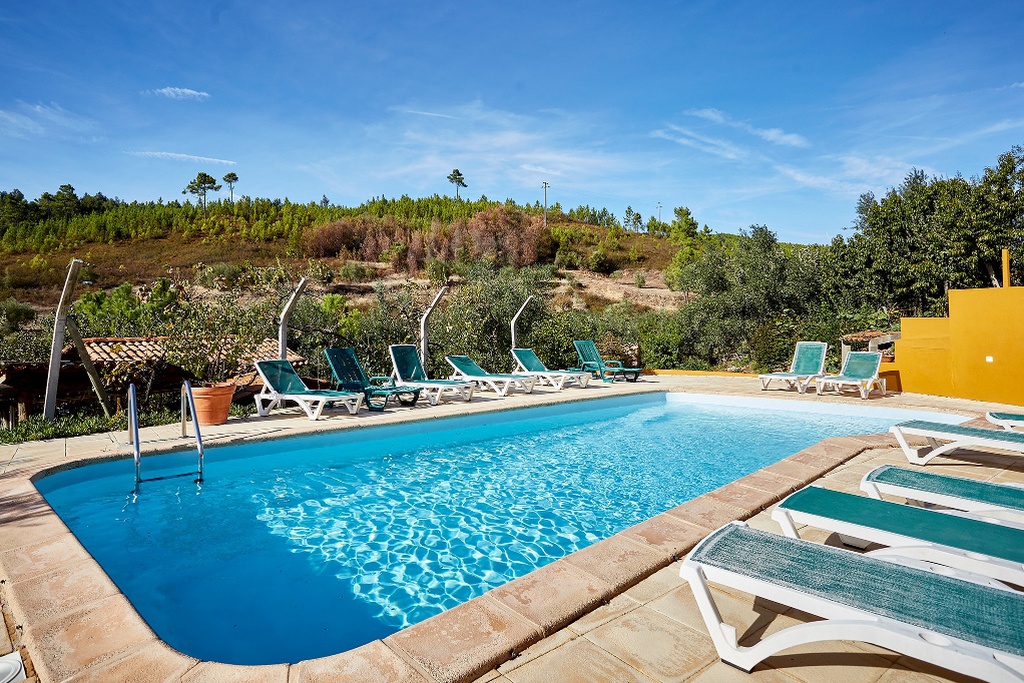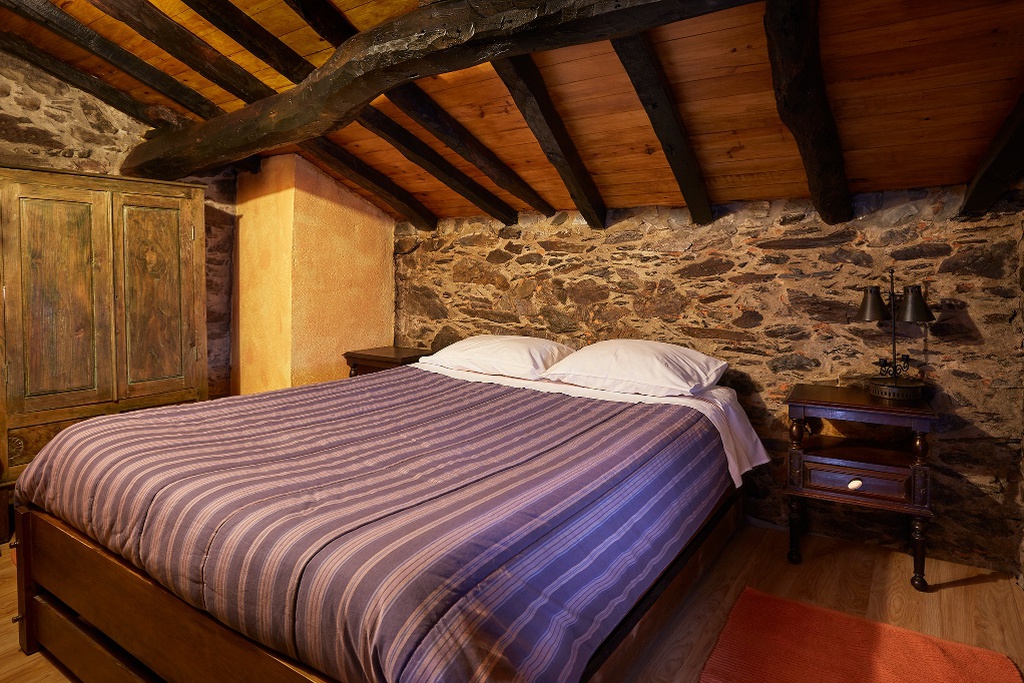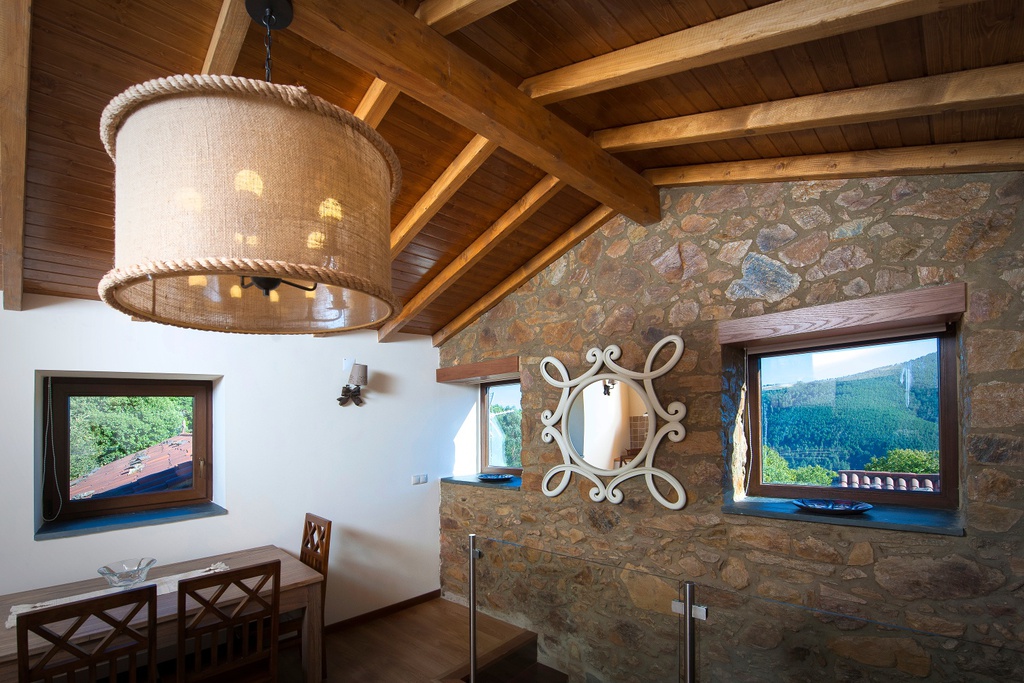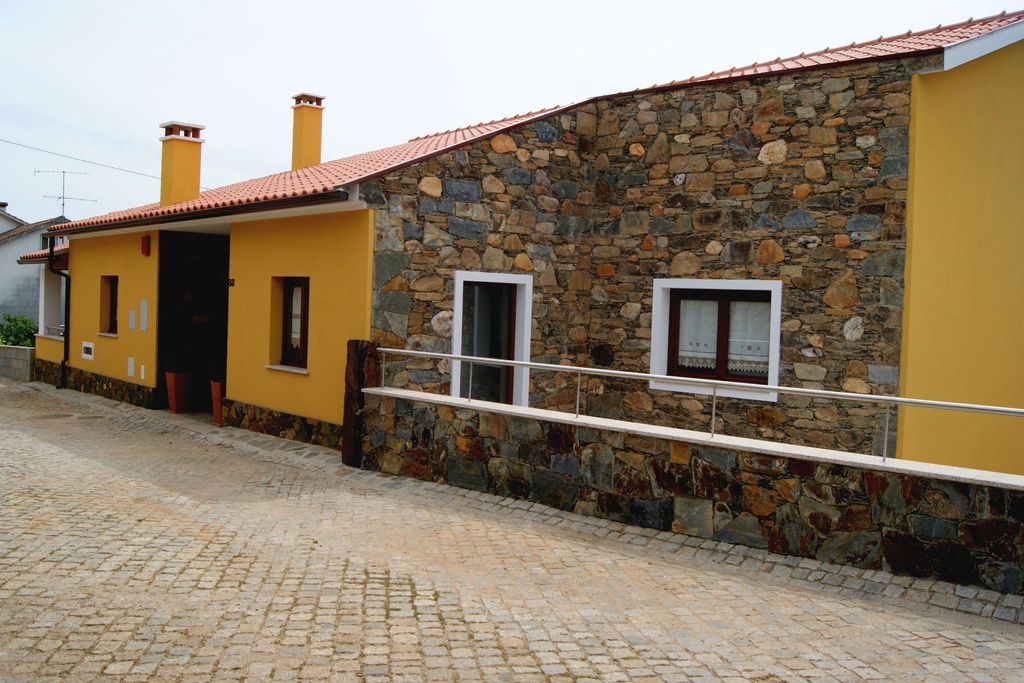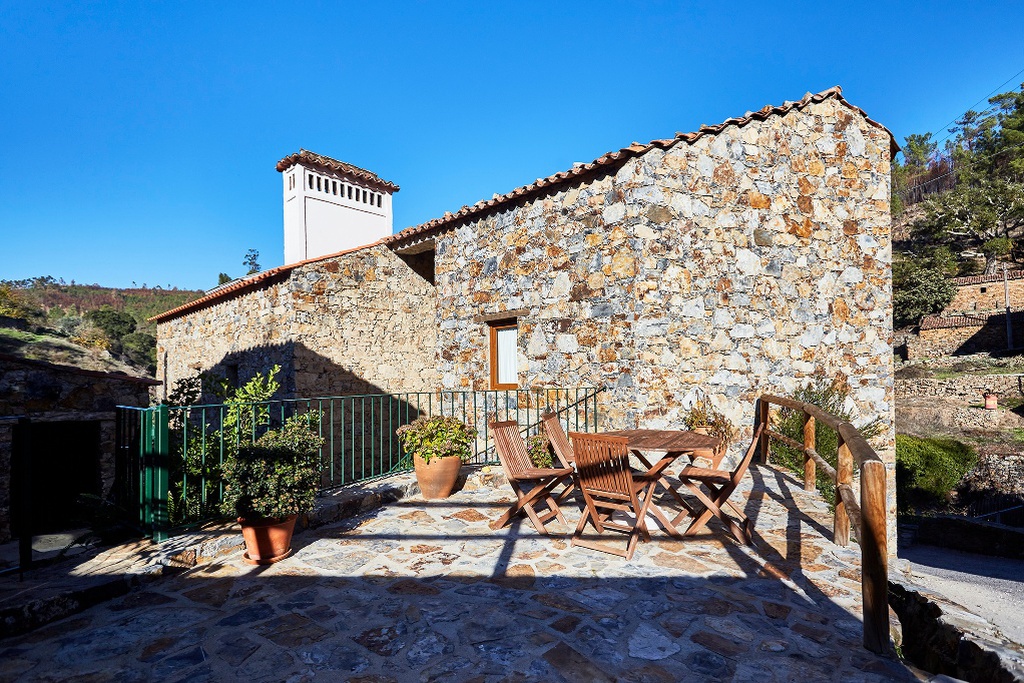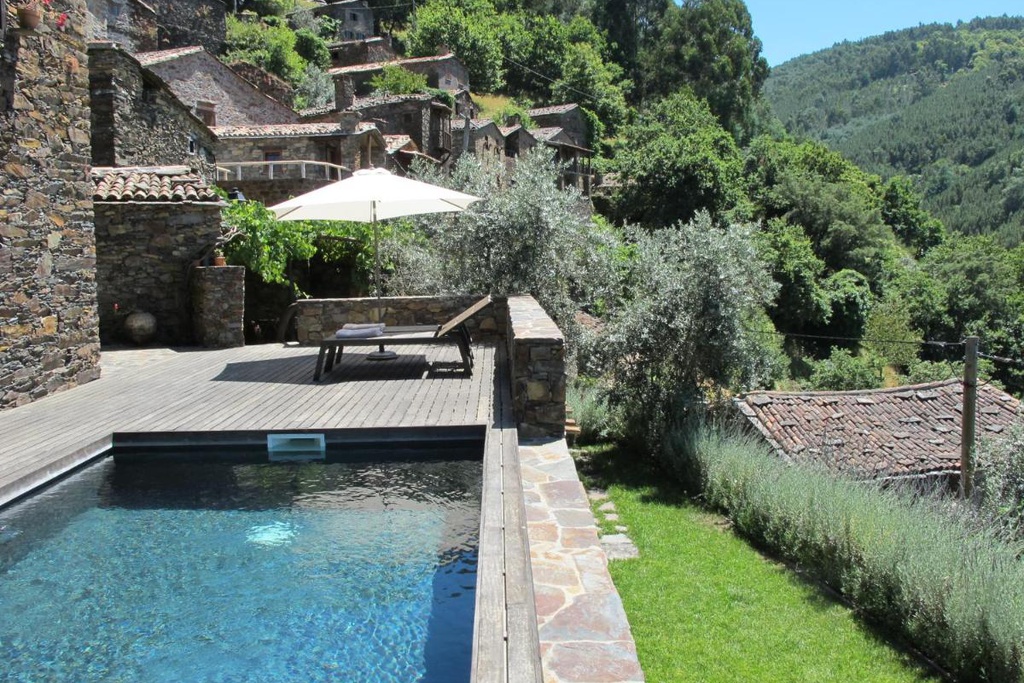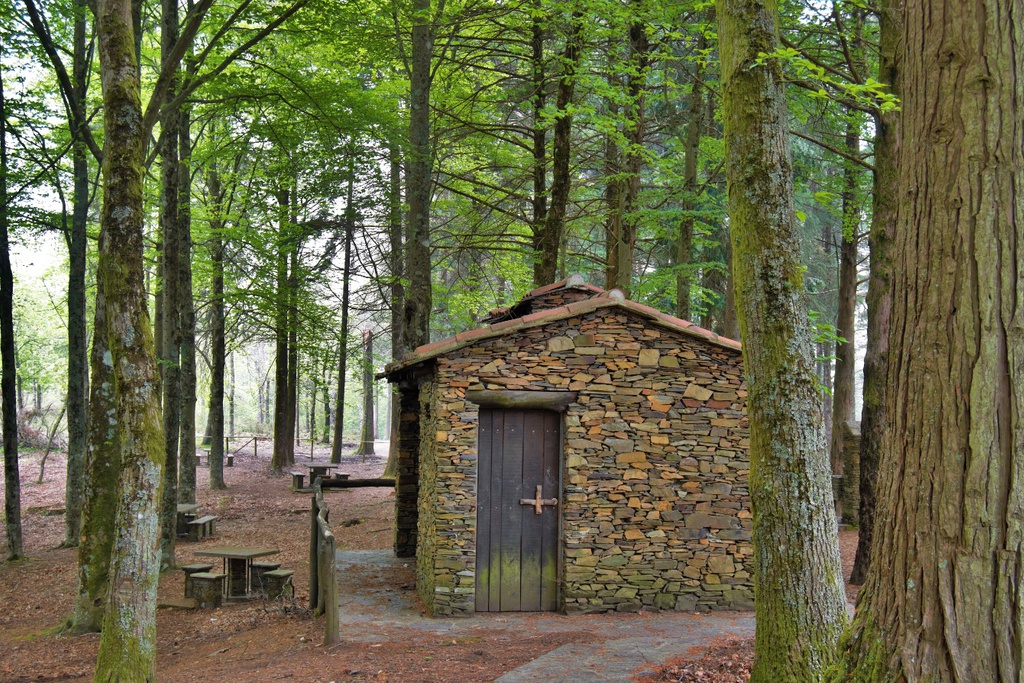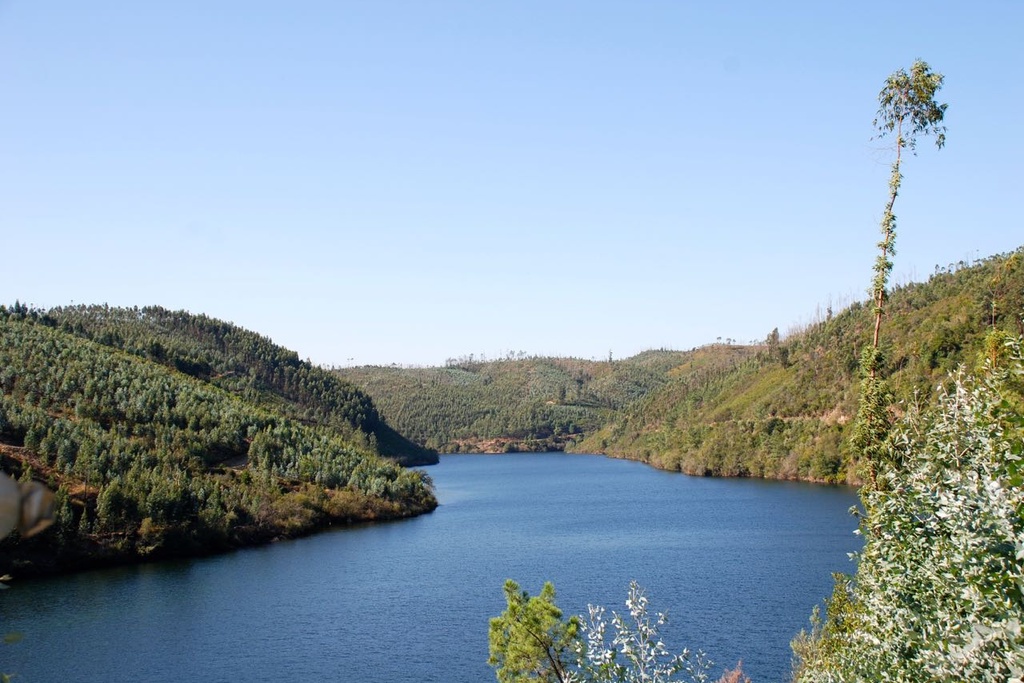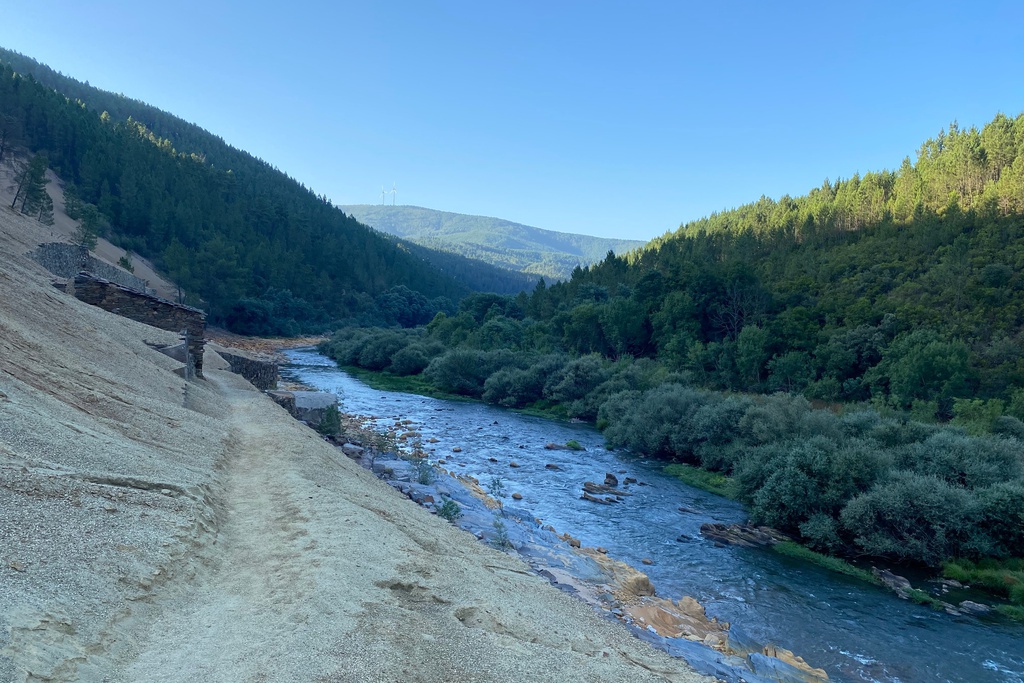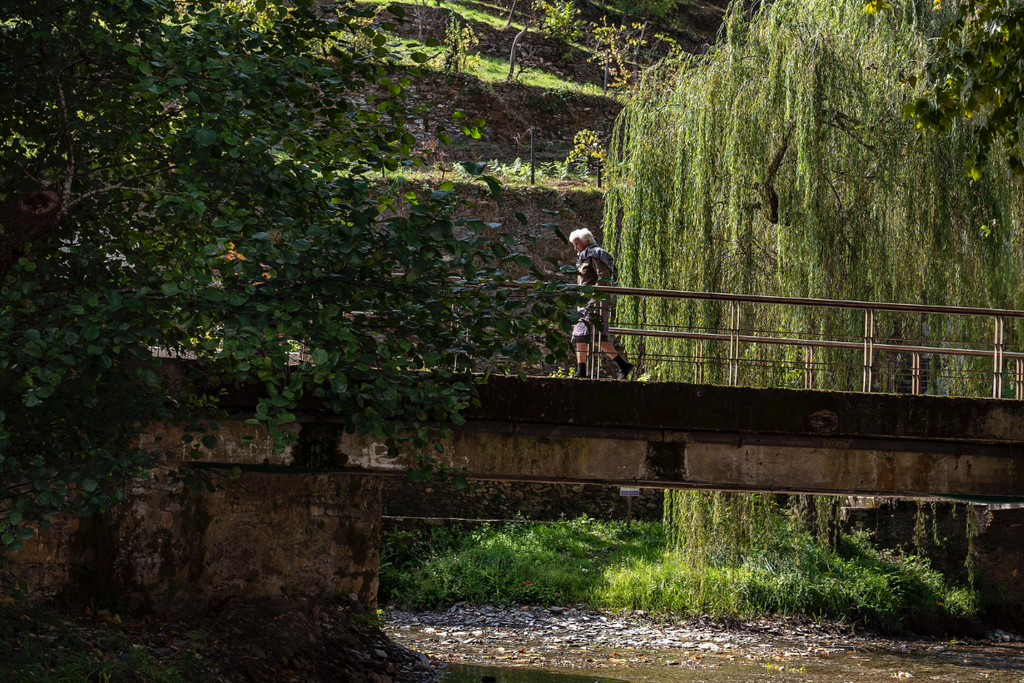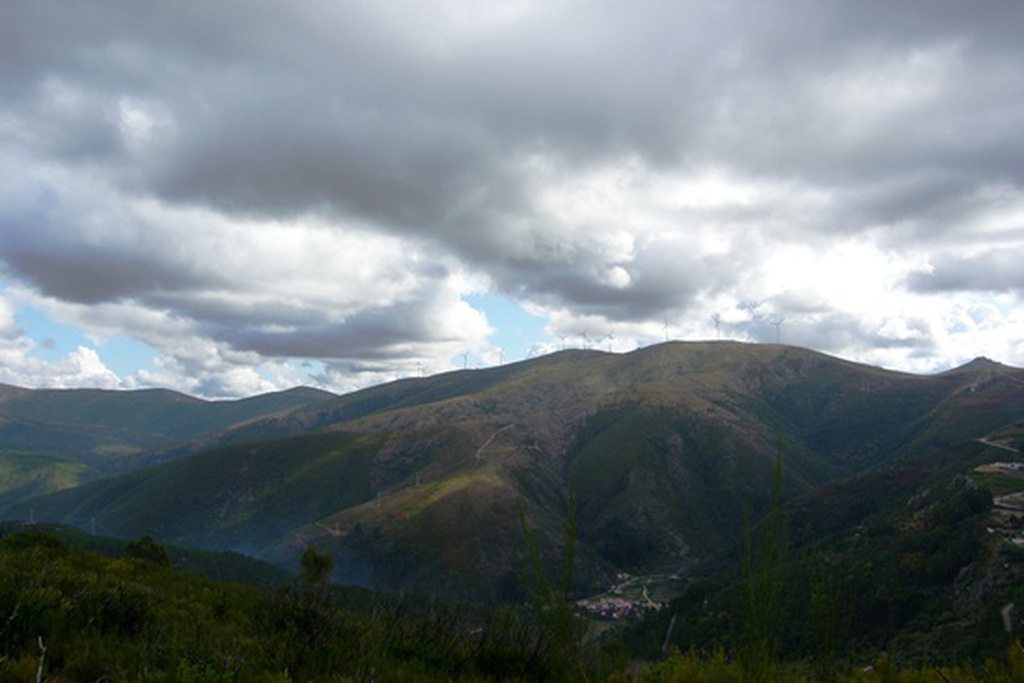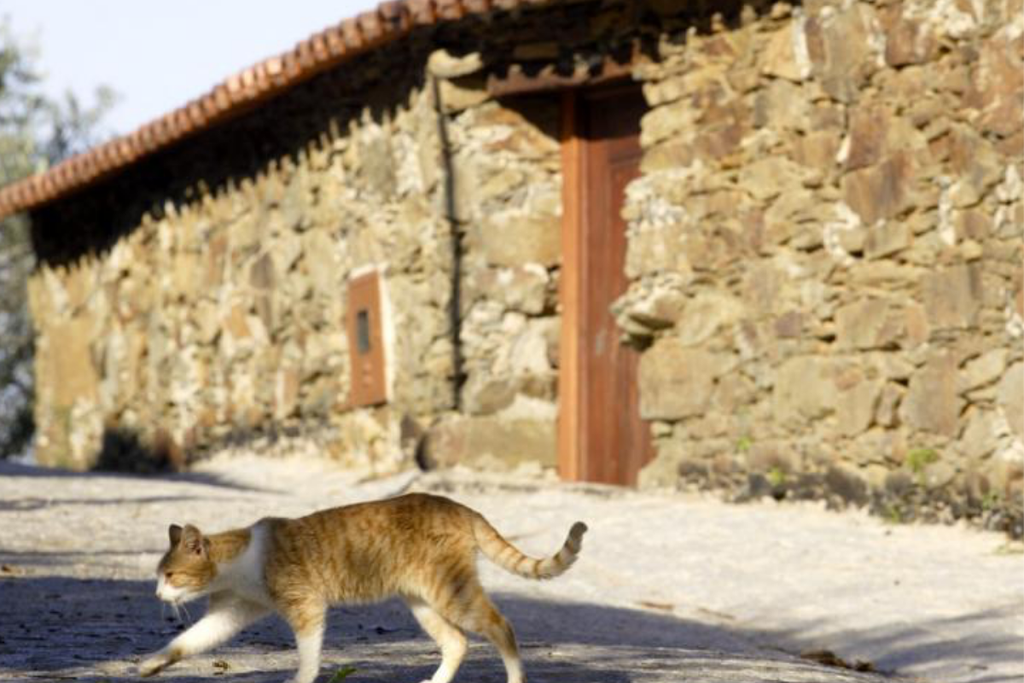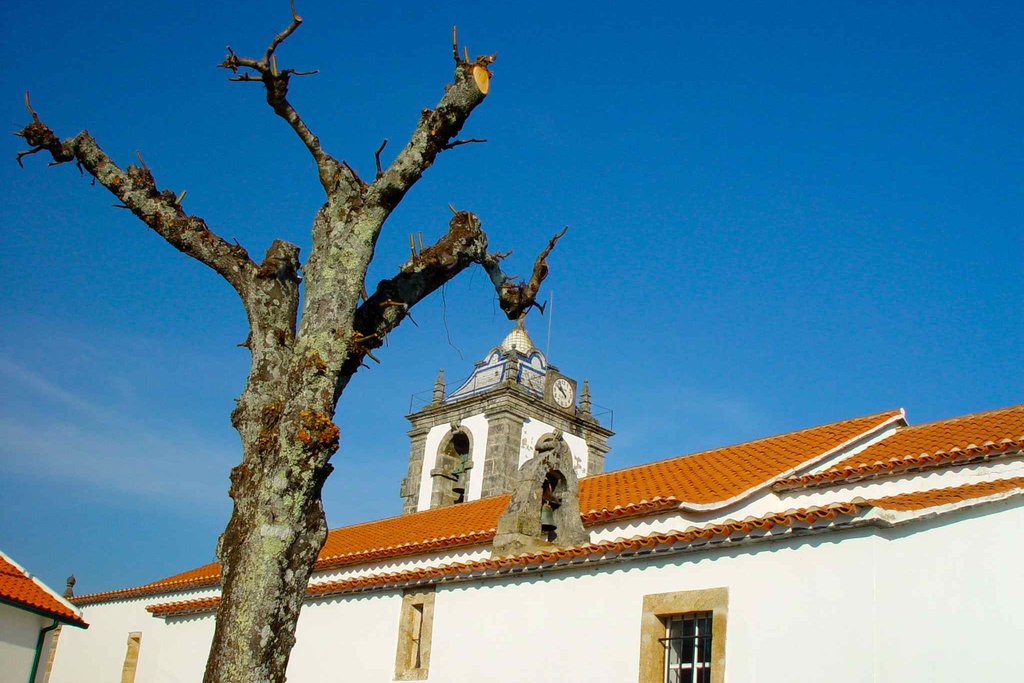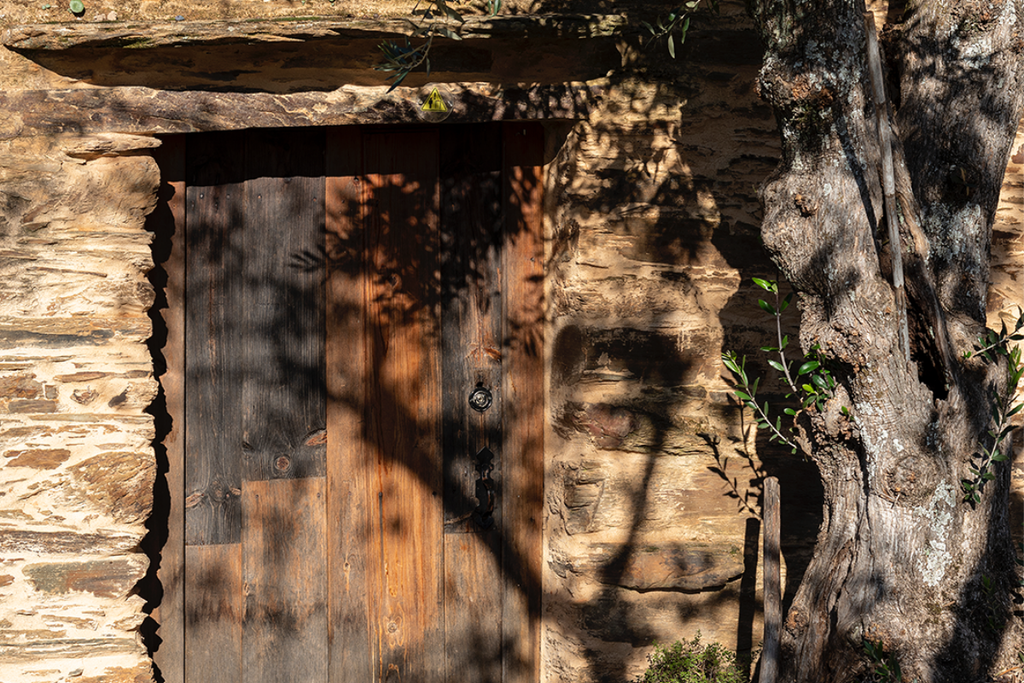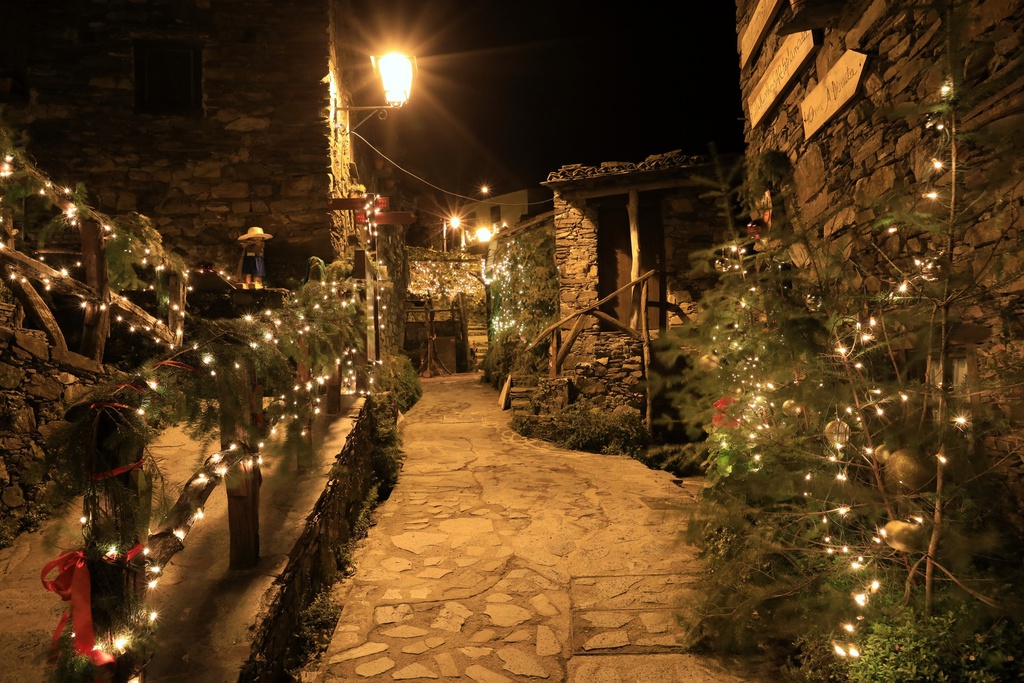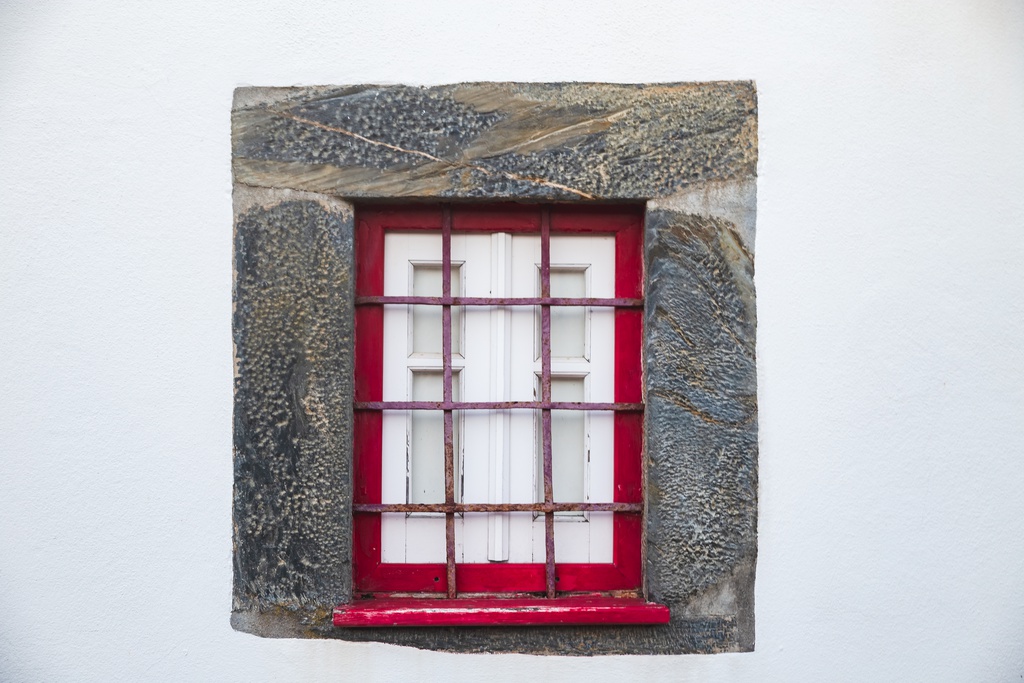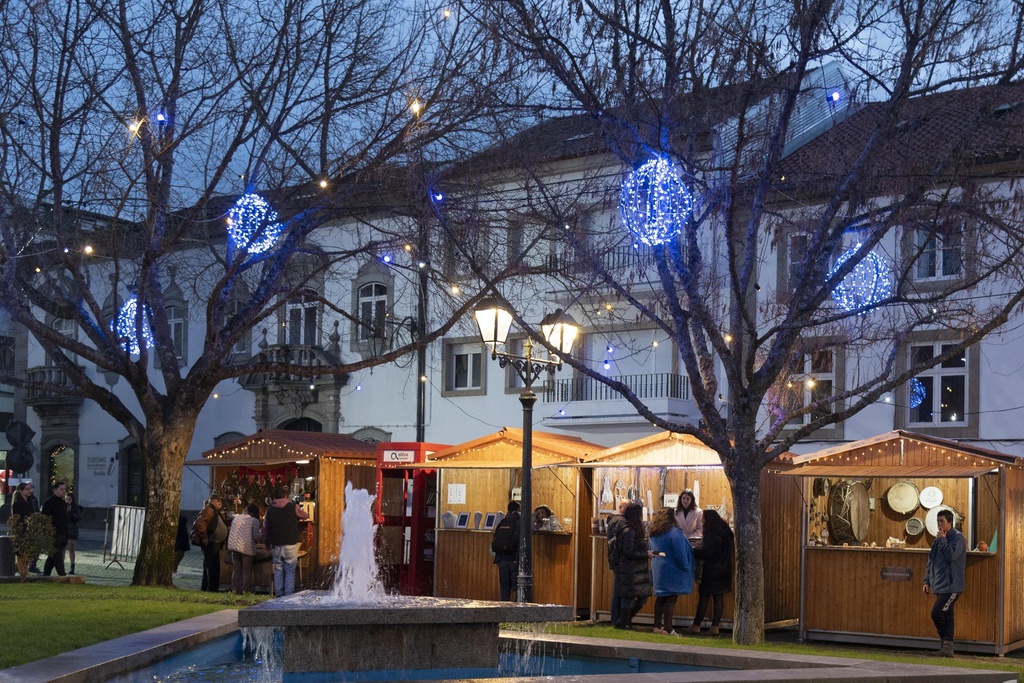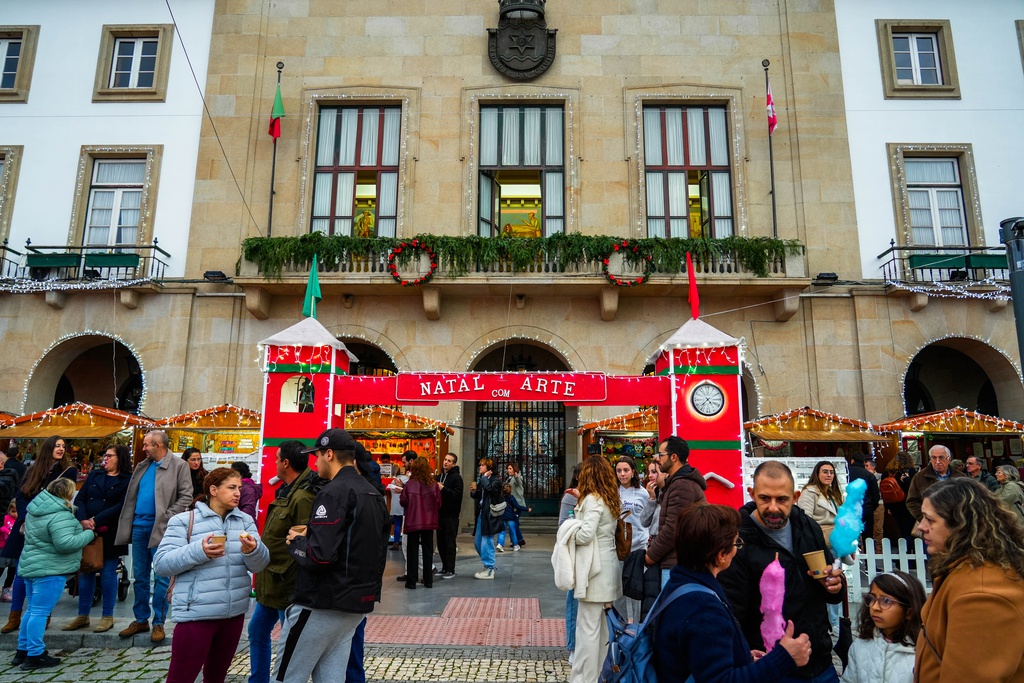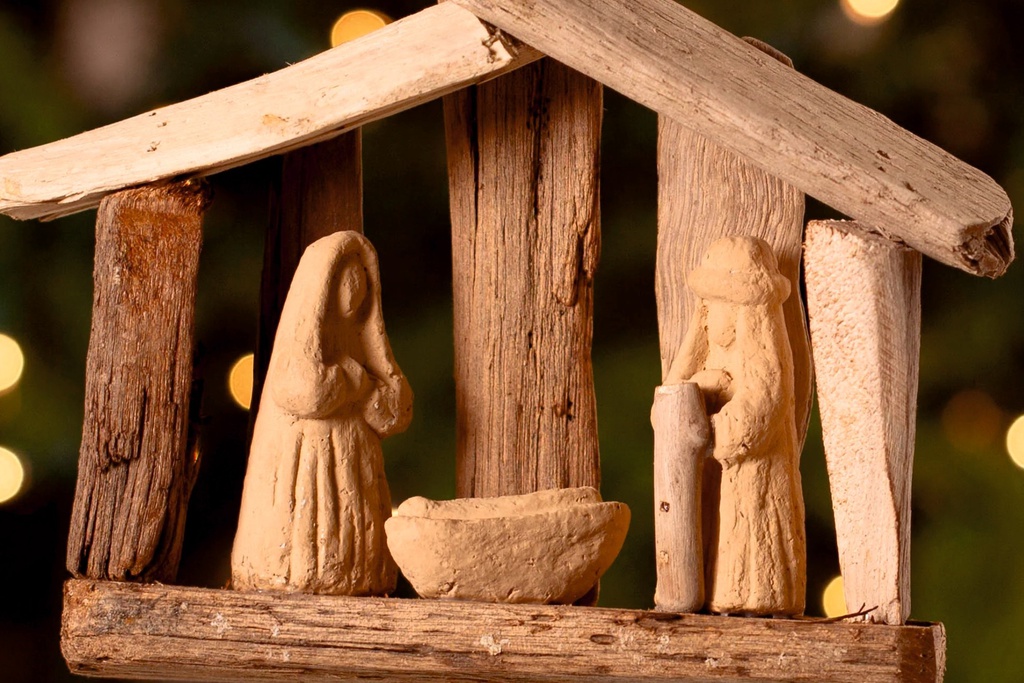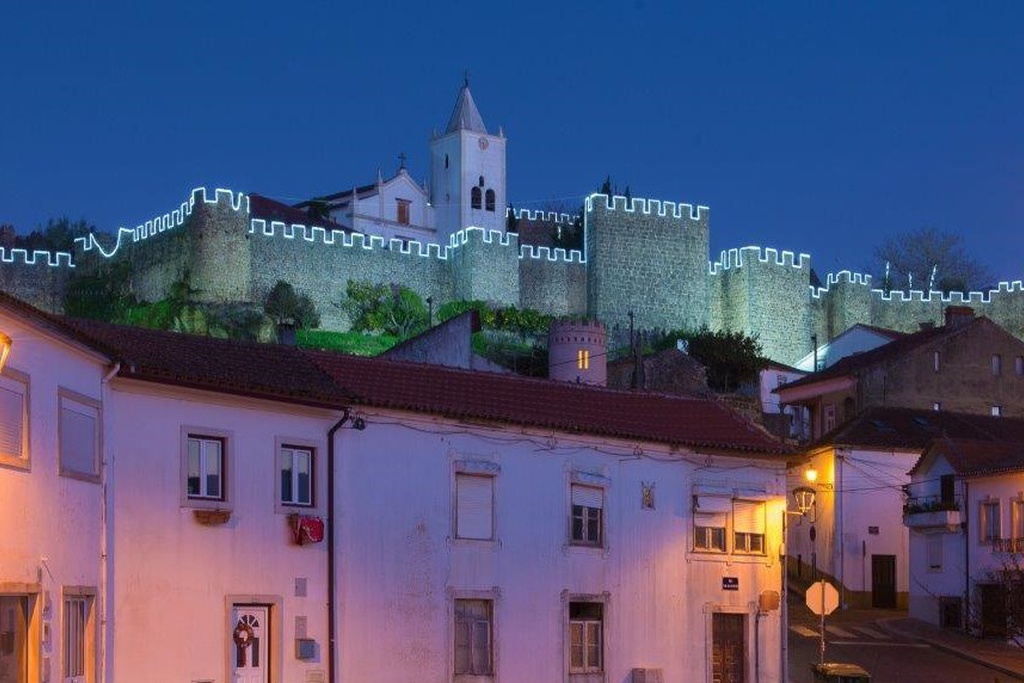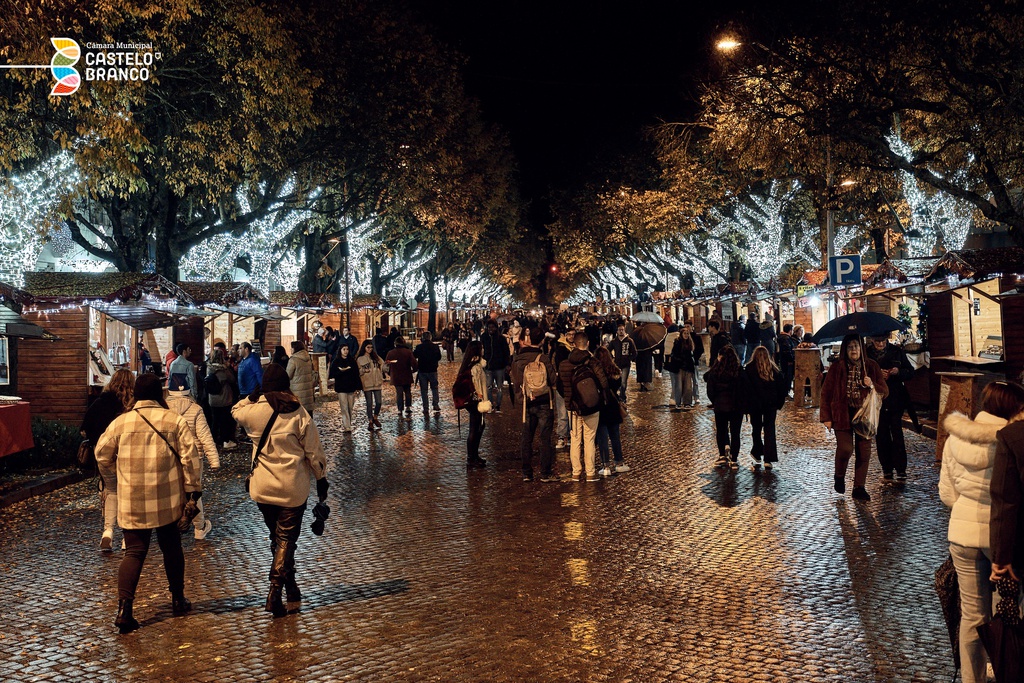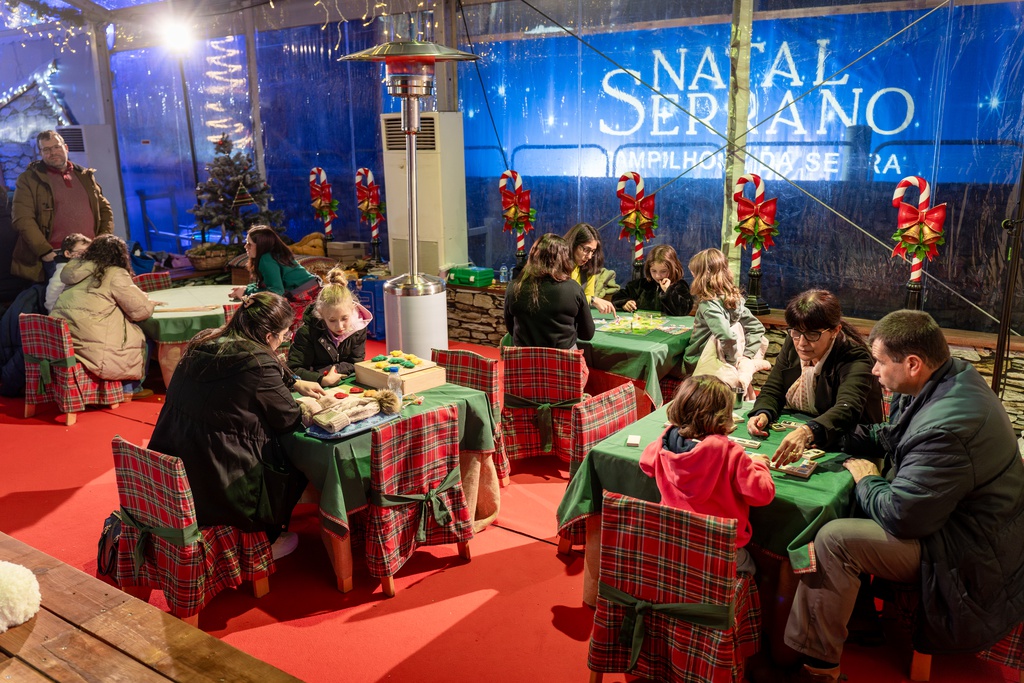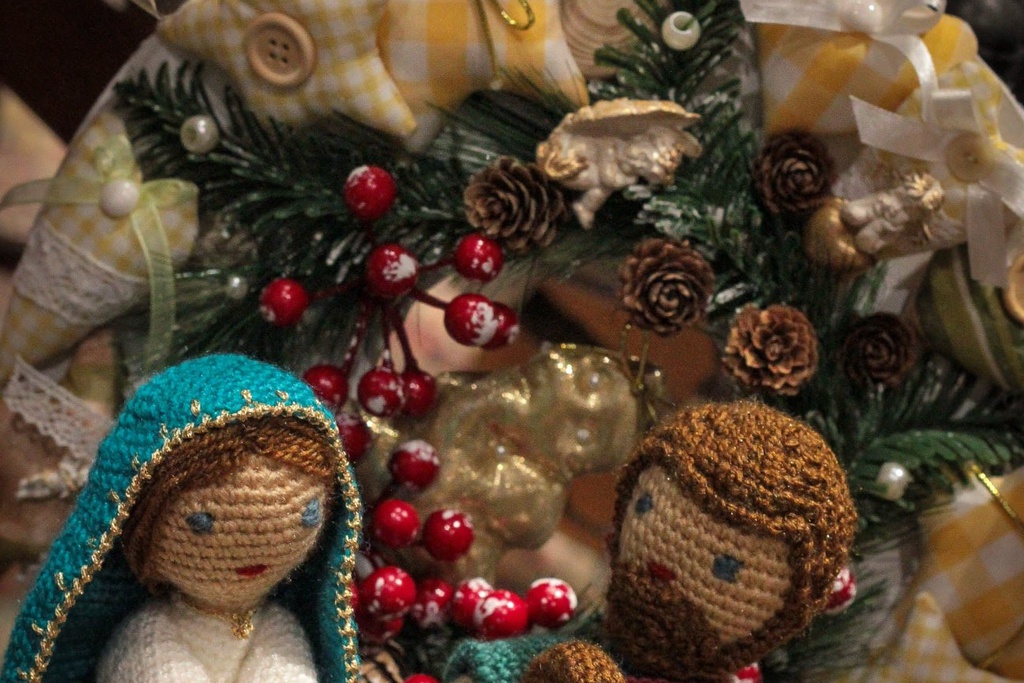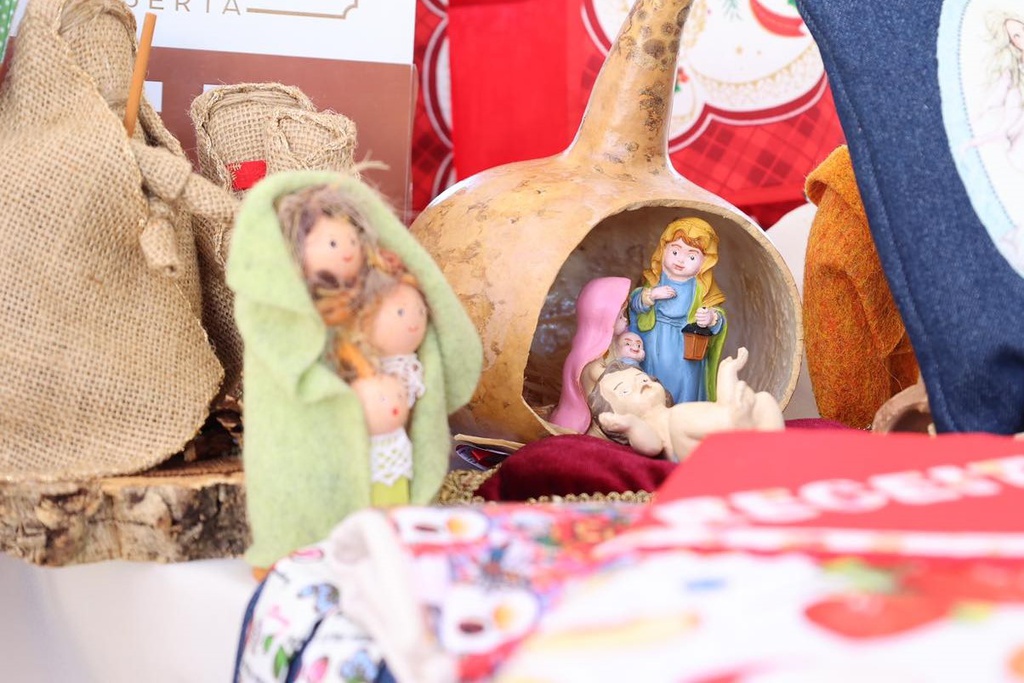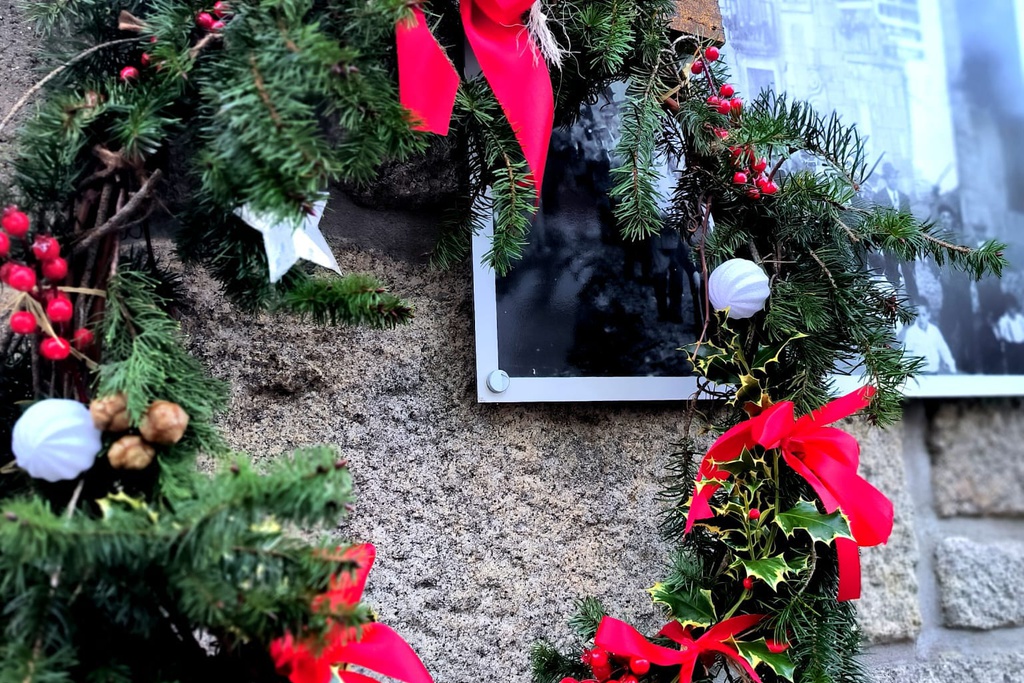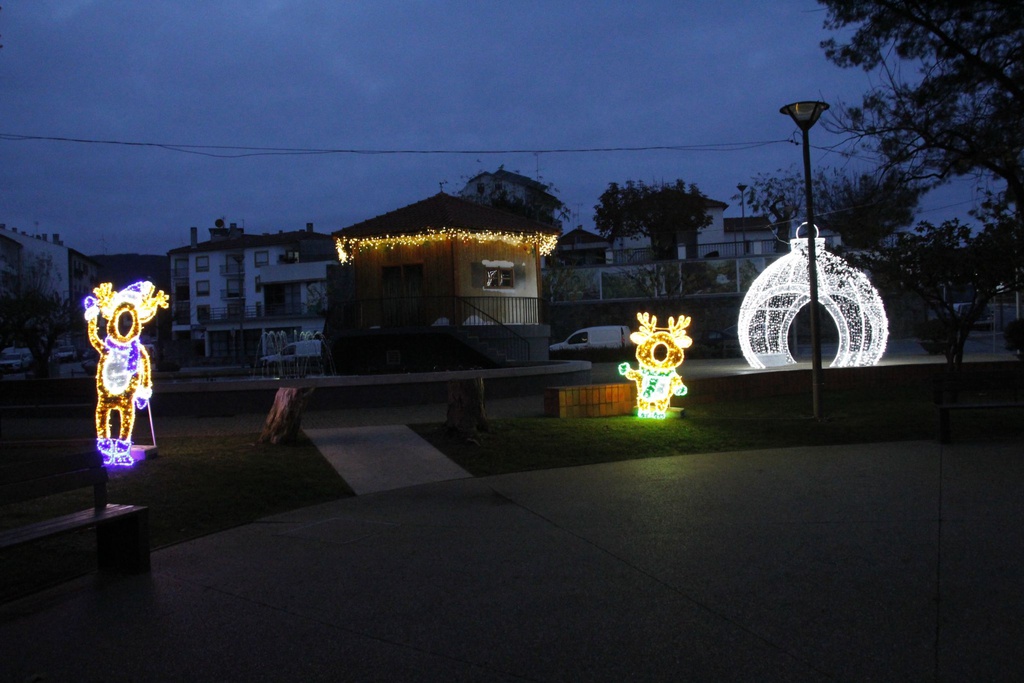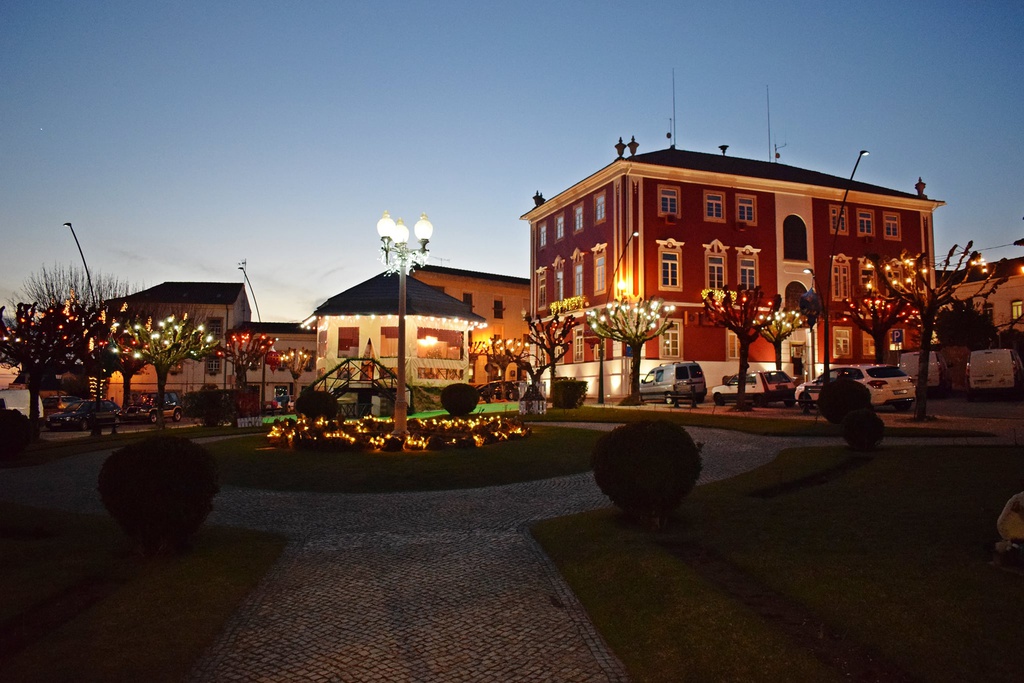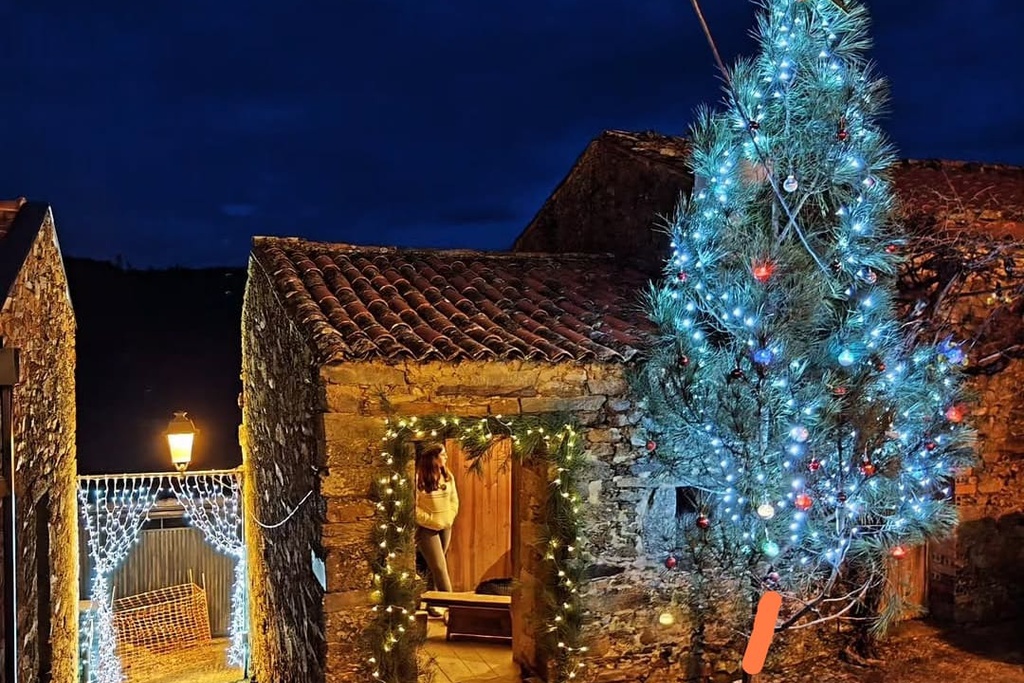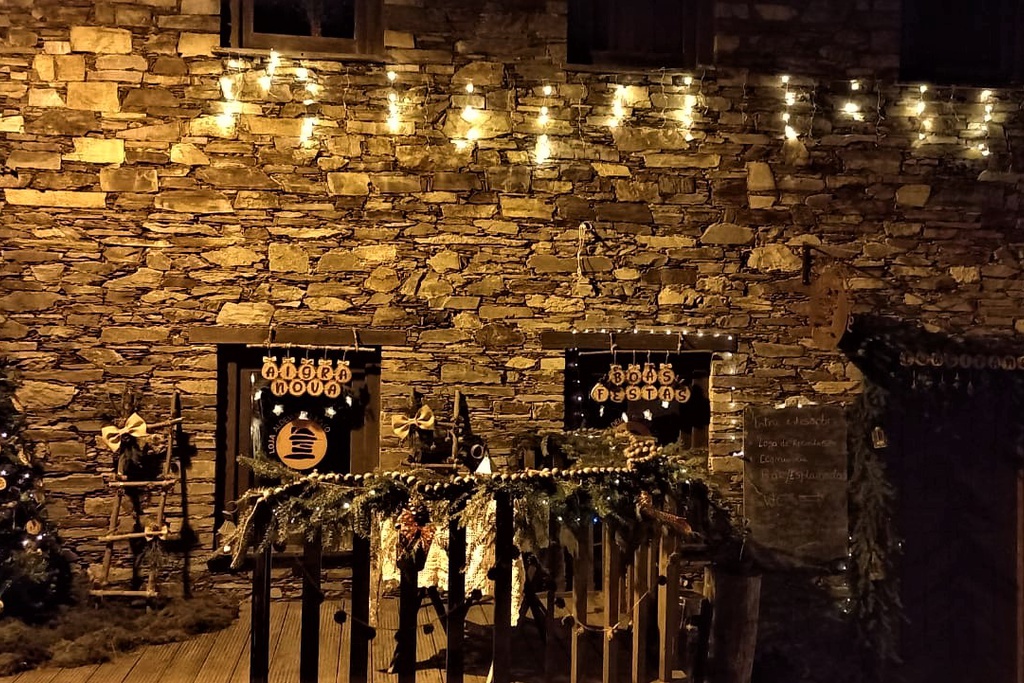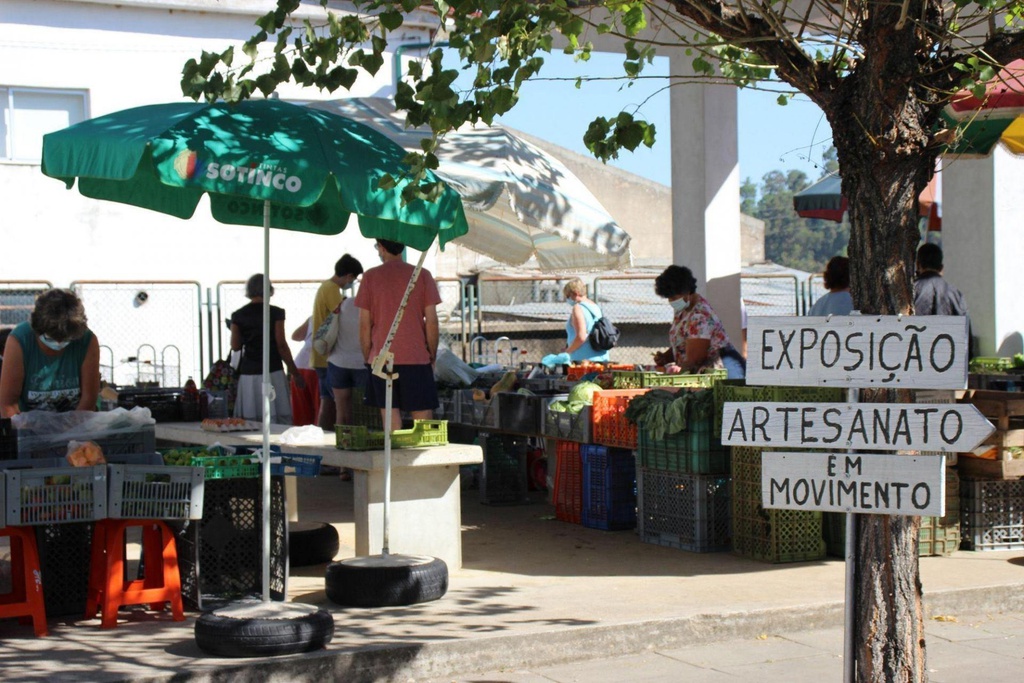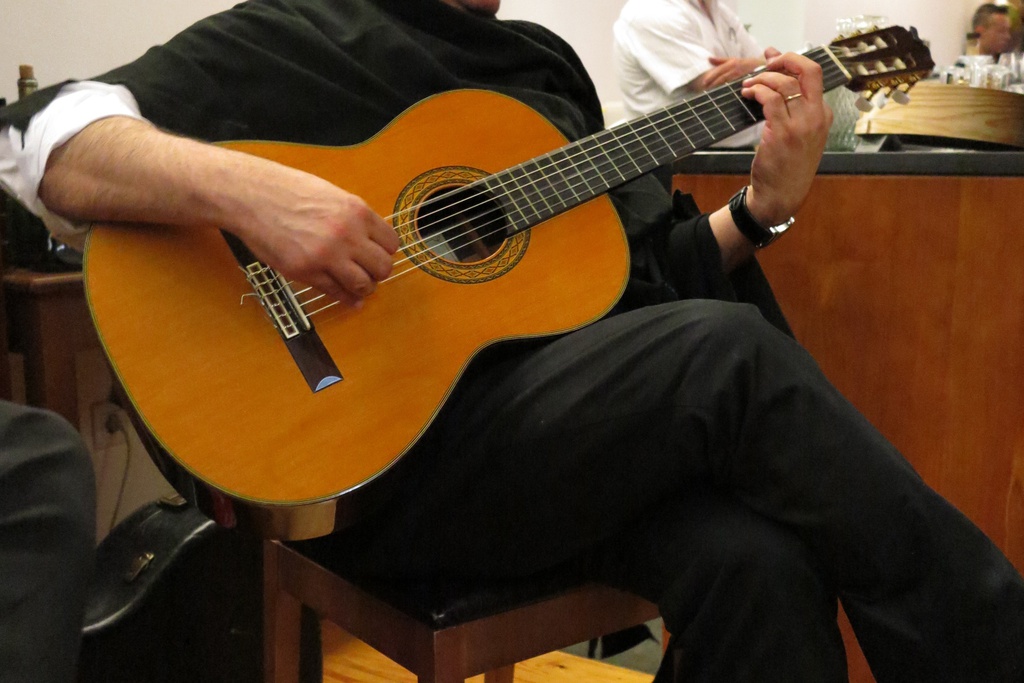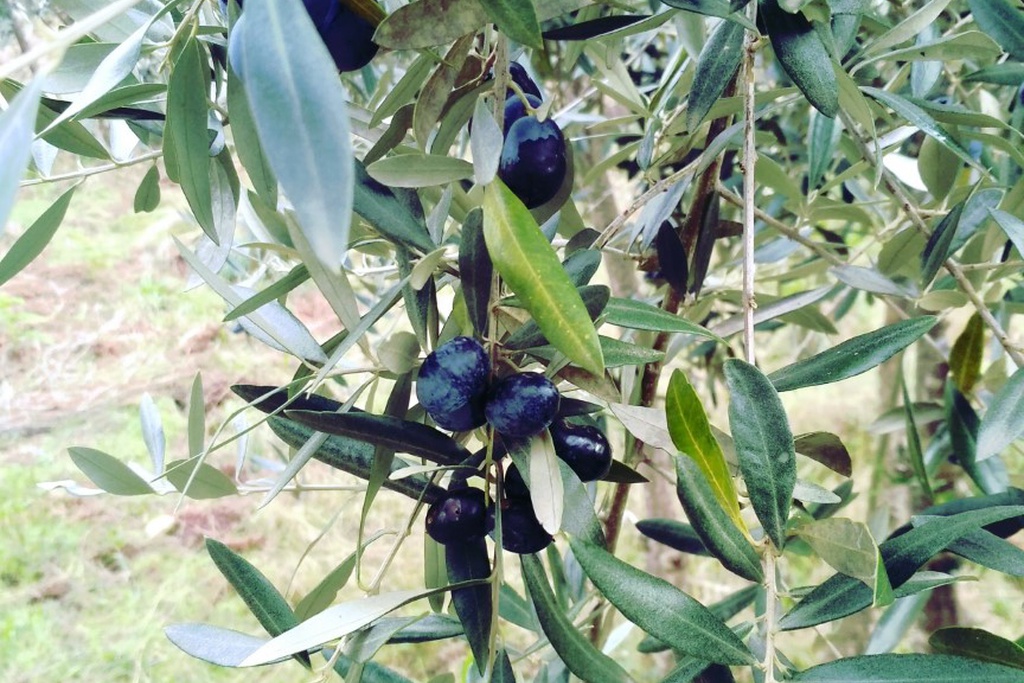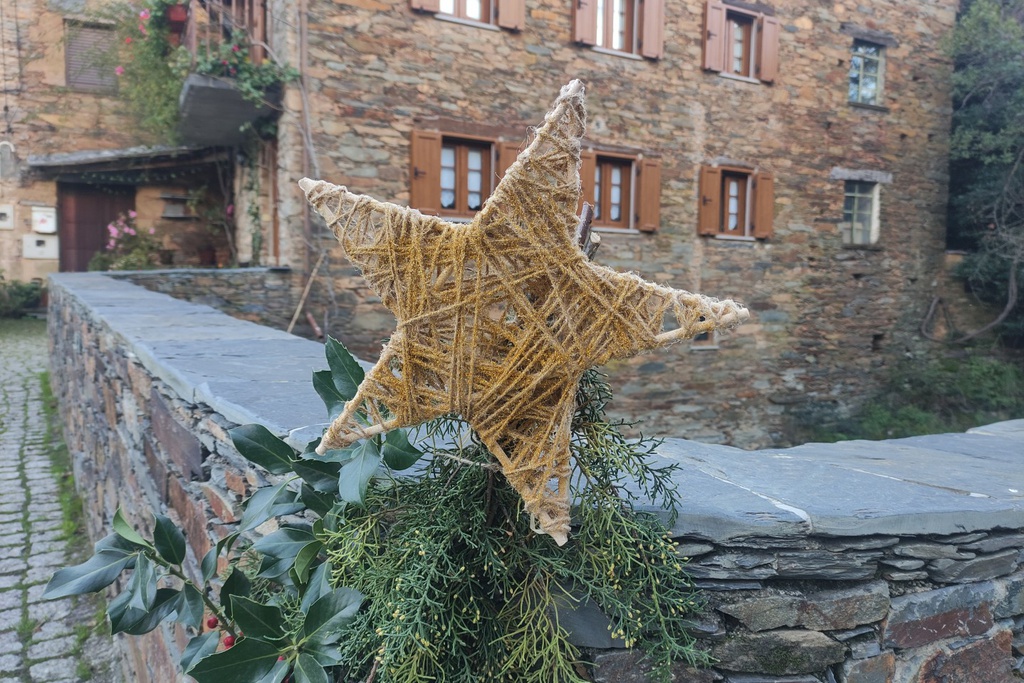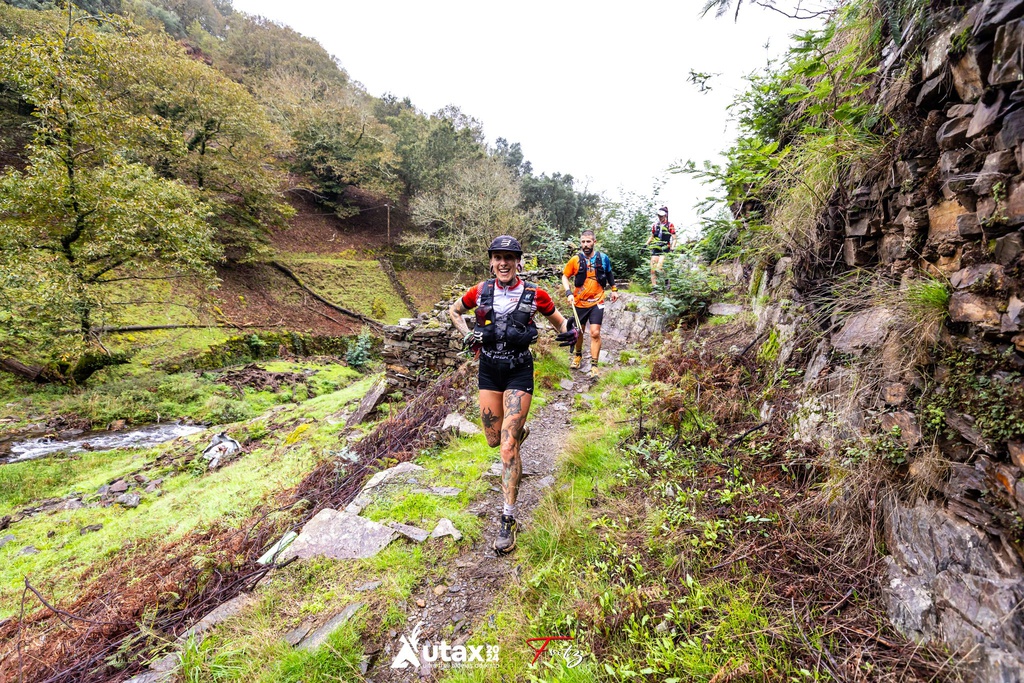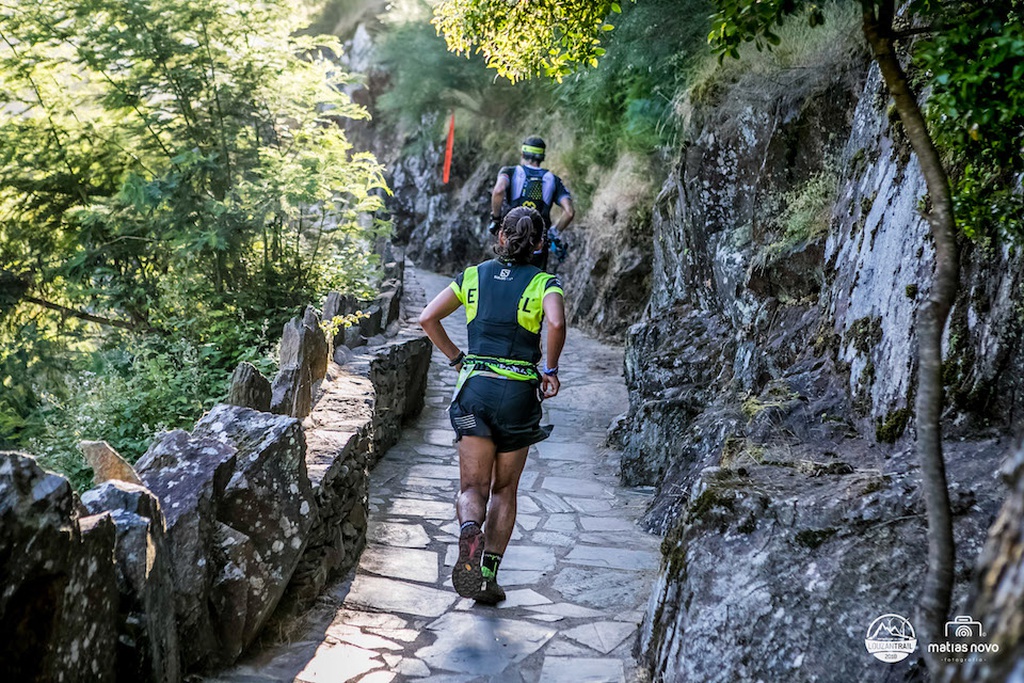The animal is scalded and the hair is removed by scraping. The presence of the skin during roasting means it keeps its juiciness and flavour. This is the traditional dish of Oleiros.
STORIES AND CURIOSITIES
The origins of this delicious Oleirense meal have been passed down through many stories, told and re-told from generation to generation.
- The first reference appears in a cookbook from the medieval Al-andaluz, when Arabs ruled the Iberian peninsula, which describes lamb roasted in oil;
- In 1624, the Oleirense missionary, António de Andrade was the first Westerner to climb the Himalayas and reach Tibet, and in his accounts of the expedition speaks of local customs, including the fact that they do not skin the sheep and goats they eat, but rather eat them with the skin charred, just as in Oleiros.
- As early as the 19th century, Alexandre Dumas describes, with considerable delight, the experience of eating lamb in Tunisia, prepared in the desert way, roasted in its skin.
- It was 1961, in the National Competition of Portuguese Cooking and Desserts, promoted by SNI and RTP, that Oleiros was represented with “Cabrito Estonado” (roasted kid), when Aura Martins Romão won first prize in the Cooking category.
- In the same year and following that competition, Aura Romão took part in Maria de Lourdes Modesto’s cooking show on RTP.
- In 1982, Cabrito Estonado was one of the dishes selected to be included in “Traditional Portuguese Cooking”, by de Lourdes Modesto, which became one of the most widely read cookbooks in Portugal.
- Later, in 1997, the Portuguese Post Office, CTT, issued a collection of 12 stamps named “Traditional Portuguese Cuisine”, which consisted of traditional dishes from the various regions. The Cabrito Estonado of Oleiros was chosen for the Beira Baixa. This collection gave rise to the book “Comer em Português” (“Eat in Portuguese”), published in the CTT Collectors Club and written by José Quitério and Homem Cardoso, where this speciality from Oleiros is referred to as a unique and authentic dish.
- In 2008, this original way of cooking oven-roasted kid was included in a selection of 10 Portuguese culinary artefacts that were considered to be of value and worth preserving. To this end, the documentary “Os Gestos dos Sabores - das memórias ao futuro” (Gestures of Flavours - from memories to the future) was produced, marketed by the “As Idades dos Sabores” (Ages of Flavours) Association and in which the genius of this dish was praised.
- The year 2009 was marked by the start of the Cabrito Estonado and Maranho Culinary Festival - an annual event now in its 7th year, with 10 restaurants participating, drawing thousands of people to Oleiros.
- In the same year, Chef Avillez’s article "Loucuras Milionárias de chefs e Clientes - As Maiores Extravagâncias Gourmet" (Madnesses of Millionaire Chefs and Clients - The Greatest Gourmet Extravagances), published in Sábado magazine on 26 February, described the most exclusive products and most expensive menus known in the world of food and drinkwere. In this article, Chef Henrique Mouro tells us that the most impressive dish, due to its preparation and end result, was a Cabrito Estonado de Oleiros that was made and served on Easter Sunday at the Carlton Palace Hotel in Lisbon.
- This was in 2011, when the Cabrito Estonado de Oleiros was nominated in the meat category of the 7 Wonders of Portuguese Gastronomy. This competition was sponsored by the Ministry of Agriculture, the Secretary of State for Tourism and RTP.
- On 31st May 2015 the Culinary Brotherhood of the Cabrito Estonado was created in Oleiros
RECIPE
Ingredients: one goat kid, lard, paprika, garlic cloves, black pepper, ham, salt, white wine
The kid should be young, no more than a month and a half old. The dead goat is “stunned”, i.e.: the goat is put little by little into boiling water and the hair is removed as it is boiled. Be careful not to punctured the skin. Once it is cooked, the kid is gutted. It is washed very well and left to drain overnight. The next day, the kid is spread with a paste made with the garlic, pepper, salt and white wine. Mince the kid’s offal, add the minced ham, some parsley and a bay leaf. This makes a stuffing, which is added to a little of the paste and put in the kid’s belly, the opening being sewn up with a needle and thread. Leave to rest for three or four hours. The goat is then coated with lard and placed on laurel sticks in a clay roasting area that serves as a grill. Every now and then sprinkle with the wine, and when it is done on one side, turn it to roast on the other.
Reciped provided by Ms Maria do Carmo – Álvaro.
Histórias e curiosidades
Das origens deste delicioso repasto Oleirense ouvem-se muitas histórias que, através de relatos e experiências, vão sendo passadas de geração em geração.
- A primeira referência surge num livro de culinária do Al-andaluz medieval, que fala de um borrego estonado com óleo;
- Em 1624, o missionário Oleirense, António de Andrade, o primeiro ocidental a escalar os Himalaias e a chegar ao Tibete, nos relatos da sua expedição e abordando os costumes daquelas gentes, realça o facto de não esfolarem os carneiros e cabras que comem, mas antes comerem-nas com a pele chamuscada, tal como em Oleiros.
- Já no séc. XIX, Alexandre Dumas descreve, deliciado, a experiência de comer um borrego preparado à moda do deserto, na Tunísia, também assado com a pele.
- Corria o ano de 1961, quando no Concurso Nacional de Cozinha e Doçaria Portuguesa, promovido pelo SNI e a RTP, Oleiros se fez representar com o Cabrito Estonado, tendo Aura Martins Romão obtido o primeiro prémio na categoria Cozinha.
- No mesmo ano e na sequência deste concurso, Aura Romão participou no programa de culinária da RTP de Maria de Lourdes Modesto.
- Em 1982, o Cabrito Estonado foi um dos pratos selecionados para integrar o livro desta célebre gastrónoma intitulado “Cozinha Tradicional Portuguesa” e um dos livros de culinária mais lido em Portugal.
- Posteriormente, em 1997, os CTT produziram a coleção de 12 selos “Cozinha Tradicional Portuguesa”, constituída por pratos tradicionais provenientes das várias regiões. No caso da Beira Baixa, foi escolhido o Cabrito Estonado de Oleiros. Esta coleção deu origem ao livro “Comer em Português”, do Clube de Colecionadores dos CTT, cuja autoria se deve a José Quitério e Homem Cardoso e no qual a especialidade oleirense é referida como um produto único e genuíno.
- Em 2008, esta forma original de confecionar cabrito assado no forno integrou uma seleção de 10 bens gastronómicos portugueses que importava valorizar e preservar. Para o efeito, foi produzido o documentário “Os Gestos dos Sabores – das memórias ao futuro”, promovido pela Associação “As Idades dos Sabores”, onde é enaltecida a genialidade deste prato.
- O ano de 2009 ficou marcado pelo arranque do Festival Gastronómico do Cabrito Estonado e do Maranho – evento anual que vai já na sua 7.ª edição e que conta com a adesão de 10 restaurantes participantes e motiva a vinda de milhares de pessoas a Oleiros.s
- No mesmo ano, no artigo do chef Avillez "Loucuras Milionárias de chefs e Clientes - As Maiores Extravagâncias Gourmet", publicado na revista Sábado de 26 de fevereiro, vêm em destaque os produtos mais exclusivos e as ementas mais caras, conhecidas no mundo gastronómico. Neste artigo, o chef Henrique Mouro relata que o prato mais impressionante pela sua confecção e resultado final, foi um Cabrito Estonado de Oleiros que era elaborado e servido no Domingo de Páscoa no Hotel Carlton Palace, em Lisboa.
- Corria já o ano de 2011, quando o Cabrito Estonado de Oleiros foi candidatado às 7 Maravilhas Gastronómicas de Portugal, na categoria das carnes. Este concurso foi uma iniciativa do Ministério da Agricultura, da Secretaria de Estado do Turismo e da RTP.
- A 31 de Maio de 2015 é criada, em Oleiros, a Confraria Gatsronómica do Cabrito Estonado
Uma receita
Ingredientes: um cabrito, banha, colorau, dentes de alho, pimenta preta, presunto, sal, vinho branco.
O cabrito deve ser cabritinho, até mês e meio. Morto o cabrito estona-se, isto é: mete-se o cabrito pouco a pouco em água a ferver e tira-se-lhe o pelo à medida que vai sendo escaldado. Tem de se ter cuidado para não se ofender a pele. Depois de estar estonado, retiram-se as tripas e as vísceras ao cabrito. Lava-se muito bem lavado, ficando a escorrer de um dia para o outro. Pelo o outro dia barra-se o cabrito com pasta feita com o alho, pimenta, sal e vinho branco. Migam-se os miúdos do cabrito, junta-se o presunto também bem migado, a salsa e o louro. Estes bocadinhos fazem um recheio ao qual se junta a um pouco da pasta que o barrou e mete-se na barriga do cabrito, sendo a abertura cozida com agulha e linha. Assim fica três ou quatro horas. Barra-se o cabrito com a banha e coloca-se nos paus de loureiro que estão na assadeira de barro a fazer de grade. De vez em quando rega-se com vinho, e quando estiver tostado de um lado, vira-se para assar do outro.
Receita obtida junto da Sra. D. Maria do Carmo – Álvaro.


